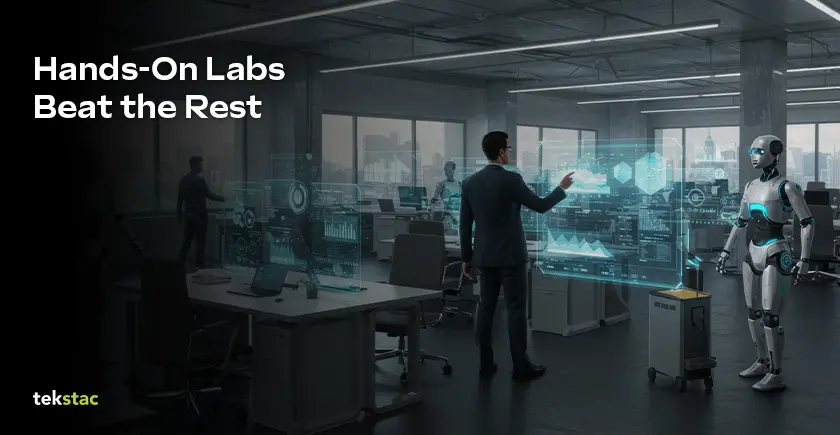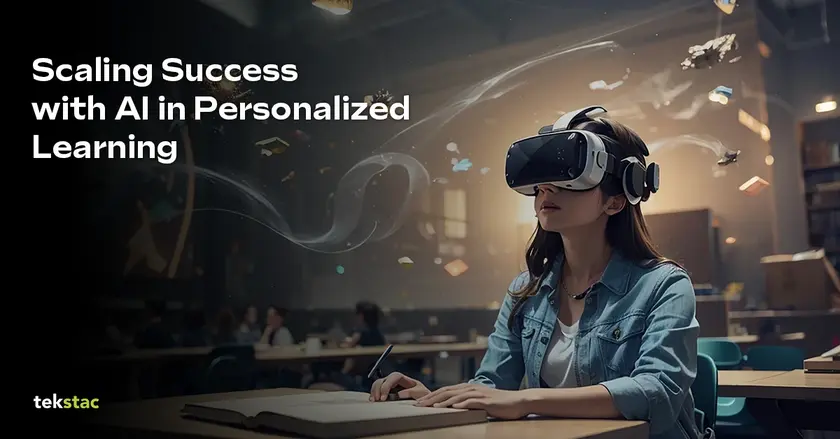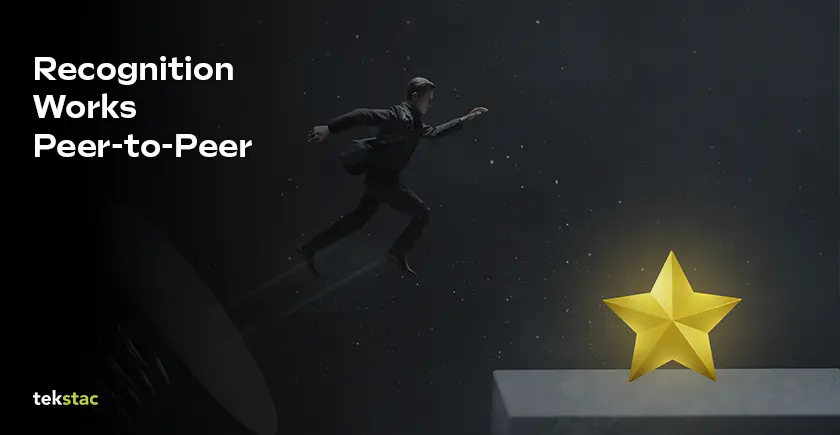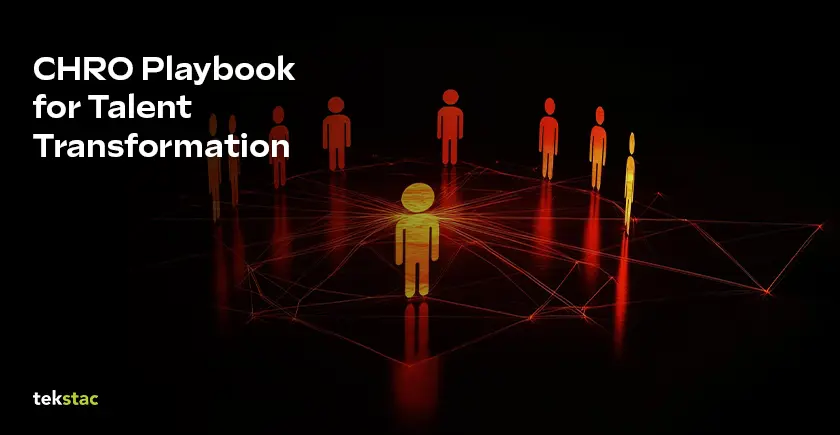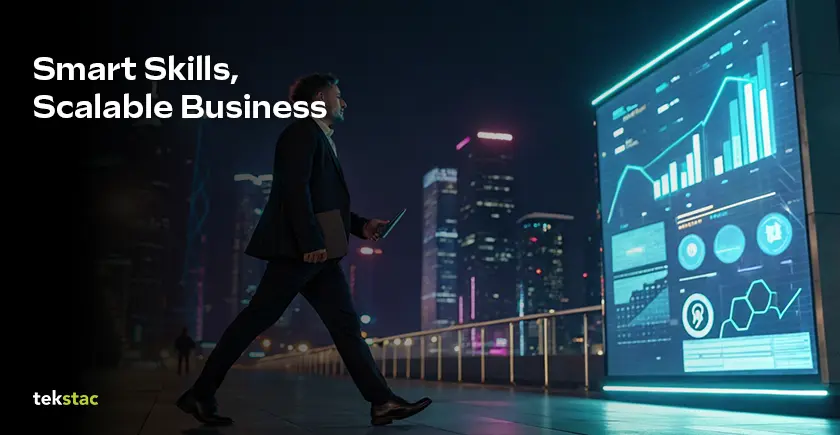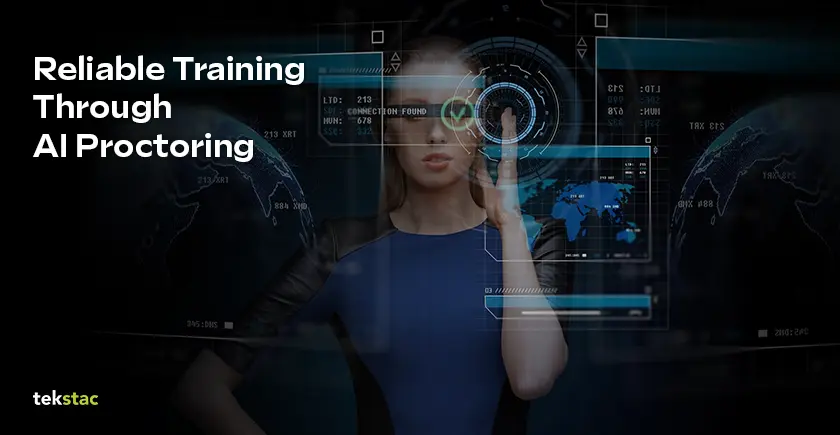Cognitive Overload Challenge: Why Tekstac Wins Where Traditional LMS Fail
It’s no surprise that technology is advancing faster than ever before.
Every day, teams learn new tools, programming languages, cloud platforms, and frameworks to keep up. The pressure to continuously upskill, reskill, and adapt is very high.
Despite all the learning platforms, content libraries, and online courses available, many organizations struggle with cognitive overload. It actively harms motivation, engagement, and retention.
Most platforms keep adding more and more videos, content, and courses, forgetting that the human brain does not thrive on abundance, but instead on clarity.
And this is where Tekstac does things differently. But before that, let’s explore what cognitive overload means.
What Exactly Is Cognitive Overload?
Cognitive overload happens when the brain is overwhelmed with more information than it can reasonably process. Rather than laziness or a lack of willpower, it’s more about bandwidth, which can be stretched thin.
For example, imagine a learner who’s working with legacy systems, upskilling in cloud tech, preparing for certifications, and still trying to deliver on business goals. If we add to this a cluttered LMS interface with hundreds of unstructured modules on top, it becomes cognitive overload.
This results in burnout, drop-offs, minimal knowledge retention, and frustrated teams. This is the real cost of cognitive overload, and it’s the cost most traditional LMS platforms ignore.
Why LMS Platforms Contribute to Cognitive Overload
Learning Management Systems came into prominence as a way to organize and distribute training content. However, most of these systems were built decades ago for compliance training, not rapid tech skill development.
Below are the reasons why traditional LMS platforms fall short when it comes to employee training and development, causing cognitive overload:
1) Content dumping without context
Many LMSs typically offer learners a massive library of courses, videos, documents, and quizzes. The problem here is that there’s little guidance on what to choose or why. This is similar to walking into a gigantic bookstore without any recommendations, maps, or curated sections. Similarly, employees feel lost, overwhelmed, and eventually walk away. This is because they see hundreds of modules, many irrelevant to their job or skill level, and realize that there’s no actual career path forward.
2) Lack of role-based personalization
In any organization, no two tech roles are the same. A data scientist has very different learning needs than a systems administrator. Yet, LMS platforms treat everyone like they are learning the same thing, thereby wasting valuable time and also adding to the mental burden of sorting through what is useful and what is not.
3) Reliance on passive learning formats
As mentioned, most LMS content consists of videos, slide decks, and PDFs. Passive learning demands a lot of mental effort without much interaction, which is tough to maintain, especially when working on day-to-day responsibilities. Without proper opportunities to practice the skills learned, learners will not be able to retain the knowledge or apply it confidently.
4) No meaningful feedback and assessments
Some platforms either lack meaningful assessments or rely on generic, manually graded quizzes that do not provide timely that do not always provide actionable feedback. When learners fail to understand where they stand or what to focus on next. This cognitive overload drains motivation and makes the learning experience confusing.
5) No adequate access to mentors and coaches
When challenges arise, especially in complex tech learning, learners may be left to figure out on their own. This is because traditional learning platforms leave learners with little to no access to mentors, coaches, or communities. This can amplify cognitive overload and the risk of burnout as well.
6) Siloed learning activity
Most importantly, many LMS platforms disconnect learning from real business goals or project demands. Learners may complete courses merely because they were assigned, feeling it as an obligation rather than a pathway to growth.
Ultimately, all the above factors combine to create an environment that causes cognitive overload.
How Tekstac Addresses Cognitive Overload Differently
While most platforms aim to treat the symptoms of cognitive overload via shorter videos, better UI, and nudges to take breaks, Tekstac tackles the root causes by rethinking how content is delivered, practiced, assessed, and supported.
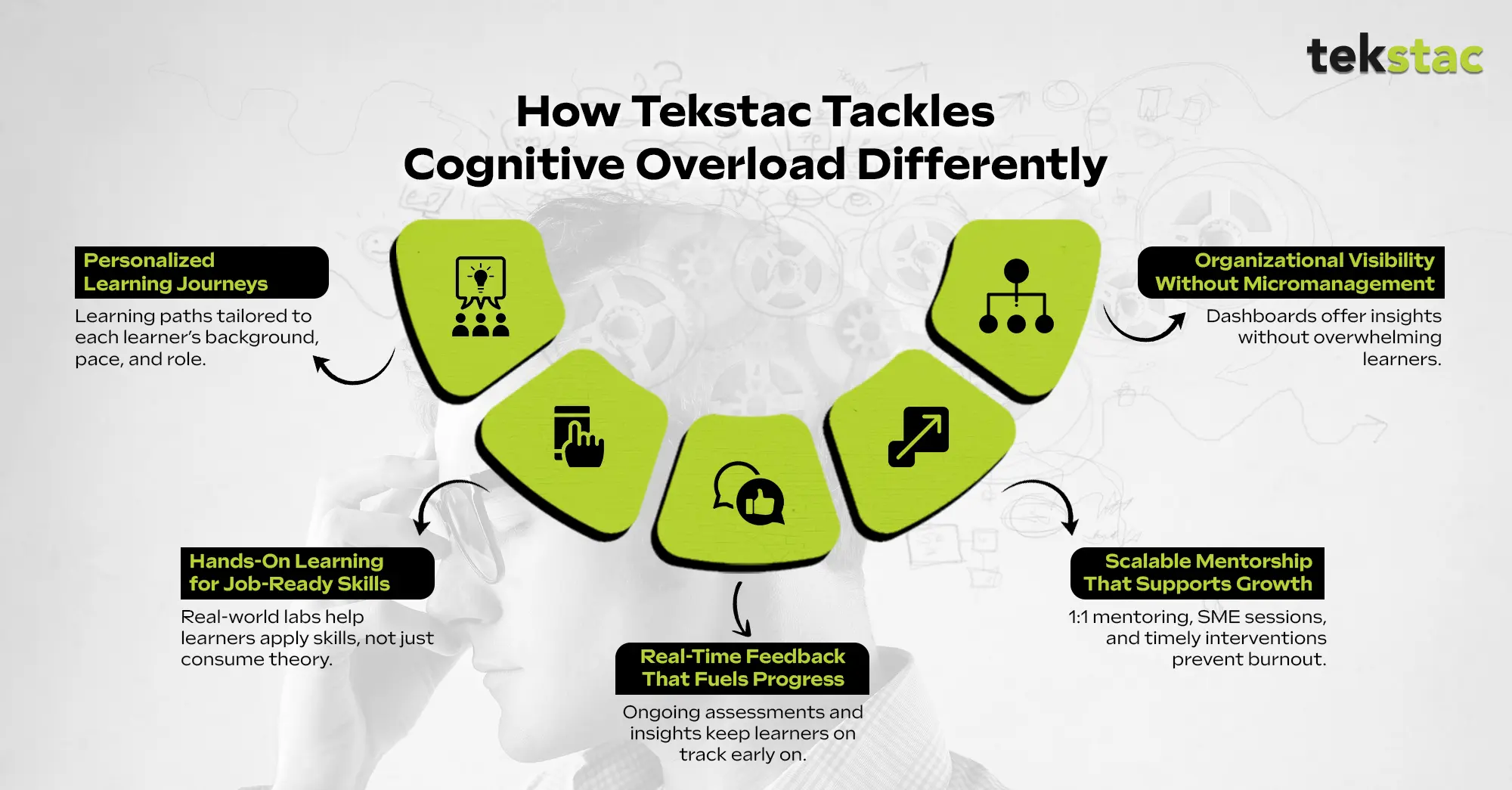
1. Built-in Learning Intelligence That Personalizes the Journey
Cognitive overload arises when every learner is forced down the same path, regardless of background, goals, or pace. Tekstac helps flip that through:
Custom learning paths: Be it a college student being prepared for onboarding or a full-stack developer upskilling for an upcoming project, with Tekstac, organizations can personalize learning tracks with only the relevant content.
AI-powered recommendations: Tekstac adapts the learner journey depending on performance and feedback, thereby suggesting remedial content, skipping what the employee already knows, and encouraging where support is needed.
Pre-onboarding to project readiness: Learning is not dumped on users in one go, but rather it’s sequenced smartly from foundational to advanced with ample opportunities to show application along the way.
Result: Learners will no longer drown in irrelevant content. Each user is shown what they need, when they need it.
2. Practice-first Model That Reduces Theoretical Fatigue
Reading documentation or watching lectures can only go so far. The real overload kicks in when learners cannot seem to connect theory to application.
Immersive hands-on labs: Tekstac’s lab environment mirrors real-world systems, right from databases to cloud infrastructure. Hence, learners learn by doing.
Lab-as-a-service: No external setup is needed. Learners need to just log in, practice, and build muscle memory.
Project-specific training: Organizations can deploy labs aligned to their tech stack, thereby making sure it is relevant and application-ready from day one.
Result: This way, learning is anchored in action. This improves retention and reduces cognitive overload or fatigue caused by passive intake.
3. Built-in Feedback Loops to Prevent Overload Creep
We might observe that some learning platforms assess only at the end, leading to binge-learning followed by failures. Here’s how Tekstac helps overcome this:
Auto-evaluated assessments along the way: Each module ends with quizzes or code checks that immediately allow learners to understand where they fell short.
Video and scenario-based assessments: Real-world judgment is tested instead of just memory recall.
Plagiarism checks and reliability index: Removes blind spots in assessment credibility. This enables more honest learning loops.
Result: Learners stay calibrated throughout instead of discovering gaps too late in the learning journey.
4. Mentorship and Intervention That Humanize the Experience
One of the biggest causes of cognitive overload is the feeling of being stuck and not supported. Tekstac handles this with scalable human touchpoints.
Mentor marketplace and 1:1 connects: Learners can engage with experts directly to resolve any blockers.
SME sessions and hackathons: Keeps motivation high and concepts applied.
Automated/manual learning interventions: Based on learner data, facilitators can step in when progress slows down and before employee frustration sets in.
Result: This way, learners never feel isolated. The system anticipates where support is required before burnout occurs.
5. Organizational Oversight Without Micromanagement
Leaders drown learners in content, hoping something will stick. Tekstac enables smarter program management.
Skill inventory visibility: Know who is learning what, and how they’re progressing, at any time.
Custom dashboards and predictive analytics: Spot high performers, identify gaps, and align training to project demand.
Audit trails and accountability: All activity is logged, but not surveilled. This helps build trust without compromising on standards.
Result: Learning is made more accountable.
What Cognitive-Ease Learning Looks Like in Action: Real-World Scenarios with Tekstac
Theory can only go so far. To really understand how cognitive-friendly learning transforms skill development, let’s walk through real-world use cases where Tekstac shapes how talent upskills.
Scenario 1: Onboarding 200 Fresh Graduates in Emerging Tech
Let’s say an IT consulting & services company need to onboard and skill 200 freshers on Python, cloud computing, and containerization in just 6 weeks. Traditional LMS-based training with heavy video lectures, PDFs, and scattered lab access had failed. Learner dropouts were high. Completion didn’t translate to readiness.
How Tekstac helped:
- Mapped 6-week outcomes into progressive learning paths, with daily 60-minute capsules (including theory, practice, and assessment).
- Each module was goal-oriented, focusing on job-critical outcomes.
- Cognitive fatigue was reduced through clear structure, active recall via quizzes, and peer discussion spaces.
- Mentor escalations dropped by 40%, and 96% of learners were project-deployment-ready by Week 7.
Cognitive outcome: Learners were focused, confident, and retained more because they were never overloaded to begin with.
Scenario 2: Upskilling Experienced Developers on New Stack Without Hurting Productivity
A tech product company wanted to reskill 50 backend developers on a new microservices architecture while they continued working full-time. Long training hours or forced weekend bootcamps had led to resistance before.
Tekstac helped in the following ways:
- Learning was broken into 30-minute micro-paths that fit into existing workdays.
- Labs were cloud-based, so developers didn’t have to waste time setting up environments.
- Weekly performance snapshots gave team leads visibility into progress without pressuring learners.
Cognitive outcome: This led to zero dropouts, and developers applied what they learned directly to upcoming product modules.
Final Word: Reduce Cognitive Overload, Accelerate Readiness
Cognitive overload, when unaddressed, can be the blocker behind most failing learning programs. It can show up in low completion rates, poor retention, and that frustrating gap between training and real-world application. Most companies may not even realize that it’s happening.
Here, the solution is a better design rather than more content. Learning must be structured around how the human brain works, meaning that it must be layered, contextual, and purposeful. Tekstac addresses these challenges by curating learning paths, delivering hands-on practice and feedback, and so on, thereby ensuring that learners walk away with job-ready skills.
Organizations that are looking to create a workforce that learns faster, retains more, and applies with impact it’s effective to start by fixing the learning experience itself.
Top 10 Goal-Setting Strategies That Solve Workplace Challenges in L&D
Sarah from marketing completed 12 training modules last quarter. However, she still struggles with the same workplace challenges she faced six months ago.
This happens everywhere. Employees complete training, yet nothing changes in their daily work. They finish courses on time management, but still miss deadlines. They take leadership workshops but avoid difficult conversations. They learn presentation skills but freeze up during client meetings.
Workplace challenges persist. Teams still struggle with communication breakdowns. Managers still micromanage instead of delegating effectively. Projects still fail due to poor planning and execution. The skills people need to succeed at work remain underdeveloped, despite all the training investment. Why?
Why Workplace Challenges Persist Despite L&D Efforts
Remember the last time employees sat through mandatory training? That glazed-over feeling when the instructor asked if there were any questions and the room went dead silent?
One of the main workplace challenges in L&D is not that employees are resistant to growth, but that most companies do not yet treat skills like abilities that need practice. Here are a few reasons why workplace challenges persist despite employee development efforts:
1. Learning is not treated like a process: Most companies offer workshops or courses and consider the job done. But skills take repetition and real-world practice to develop, not just a single chunky session or video. Innovative strategies like microlearning can address these issues.
2. Learning content doesn’t address specific job problems: Employees often face specific challenges, like handling conflict, managing deadlines, or delegating tasks. But the training they receive is too generic and doesn’t help solve those real issues.
3. There are no clear goals tied to learning: Employees complete training, but they do not understand what’s expected to change in their work afterward. Hence, without specific goals, it’s hard to apply what was learned.
4. Managers don’t support ongoing development: After training, most employees are left on their own. If managers don’t follow up or create space to apply new skills, the learning may be quickly forgotten.
5. L&D is not a long-term plan: Learning programs are often launched only after problems show up. There’s no proactive strategy to build skills ahead of time — which means the same challenges keep repeating.
How Goal Setting Drives Employee Development Amid Workplace Challenges
While most organizations focus heavily on delivering learning, very few take the next step to define what employee development should look like in practice. Without clear outcomes tied to learning, employees walk away from training unsure of what’s expected to change. Furthermore, when managers fail to reinforce those expectations, even well-designed programs can lose their value and impact.
Goal setting helps fix these workplace challenges, bringing structure and accountability into the development process. For example, a leadership goal might be:
- “Hold two one-on-one check-ins with each team member every month”
- “Delegate one full project each quarter without daily intervention”
These become signals of whether someone is actually developing the skill. With goals like these, employees can track progress, apply what they learn, and get targeted feedback from their managers. Some other major reasons why goal-setting helps:
1. It turns learning into action: Goal-setting strategies in L&D bridge the gap between knowing and doing, giving employees a clear target to apply what they have learned in real work situations.
2. It adds structure to development: Without goals, employee development can feel incomplete. Employees need specific, time-bound outcomes that guide their growth step by step.
3. It makes progress visible: Learning without visible milestones can make employees feel stuck. Goals give employees and managers a clear way to track movement in regard to skill change.
4. It personalizes the learning journey: Setting individual developmental goals helps employees focus on what they need, along with what the company rolls out.
5. It creates accountability and momentum: When goals are clear, ownership becomes easier. Employees stay engaged while managers know how to support them, review progress, and celebrate development wins.
10 Goal-Setting Strategies That Work in L&D Workplace Challenges
Most companies use SMART goals or OKRs during performance reviews. These work fine for tracking quarterly targets or project milestones. But they fall short when applied to skill development.
Traditional goal frameworks ignore this messiness. They assume you can learn delegation skills the same way you’d complete a sales quota – with clear milestones and predictable timelines. But developing capabilities means breaking old patterns, which takes time and repeated practice. Real skill development looks different. Someone learning to give feedback might nail it with friendly colleagues but struggle with difficult personalities. Someone building presentation skills might excel at internal meetings but panic during client calls. These aren’t failures – they’re normal parts of learning and workplace challenges that goal-setting must account for.
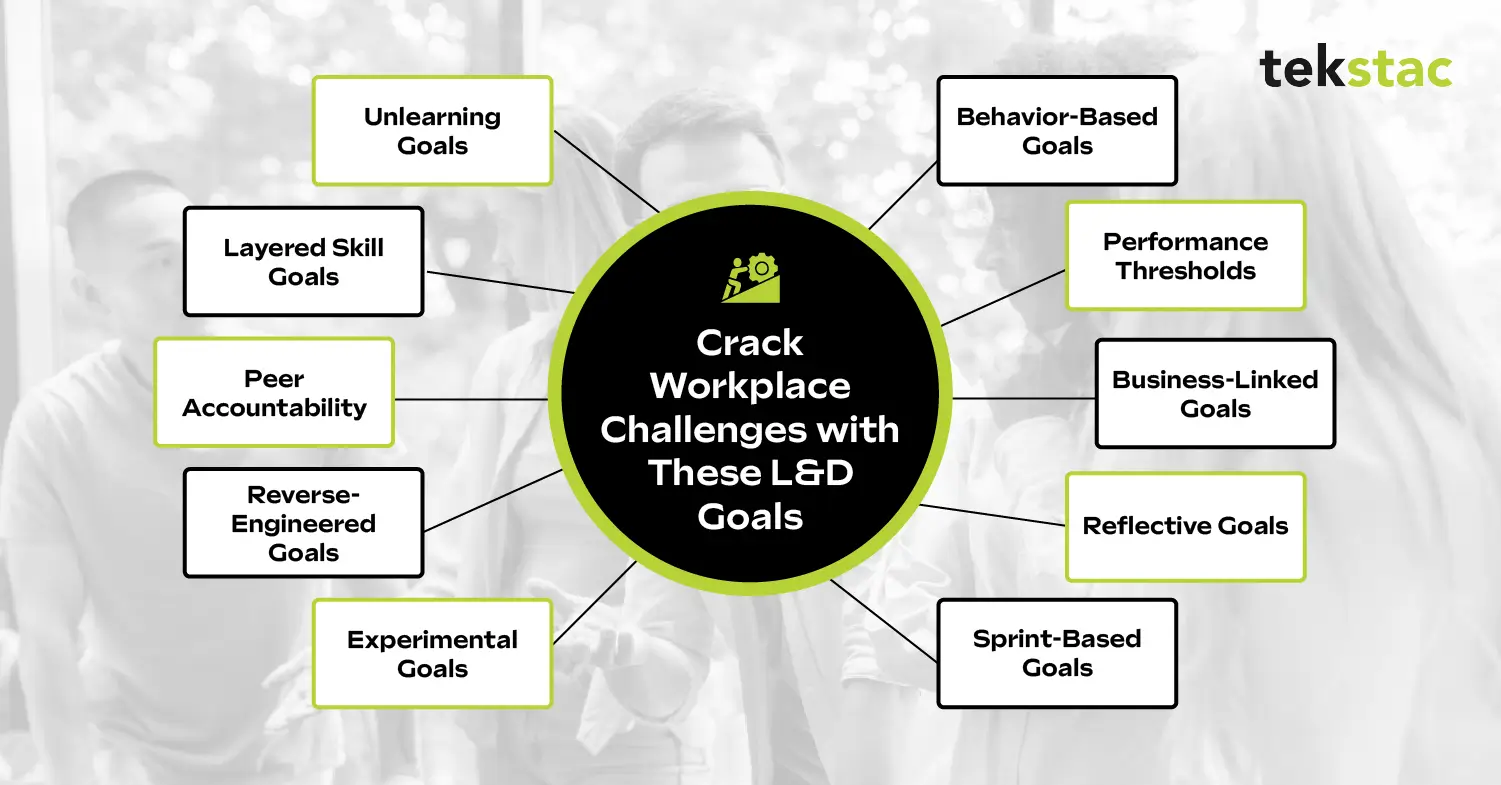
The strategies below recognize this reality. They work with the natural ups and downs of skill development instead of fighting against them.
1. Translate learning objectives into behavior-based goals
One of the biggest gaps in L&D is assuming learning equals doing. High performing organizations take it further and define success as an observable behavior. For example, an objective like “complete negotiation training” can look like “negotiate three client contracts without senior support” as an outcome. This changes the focus from input (the training) to output (the behavior change). To implement this, organizations must align every learning intervention with a concrete, on-the-job action they expect to see post-training, and review it in one-on-ones. Strategies like gamification can change how organizations build skills for practical outcomes.
2. Use performance thresholds to tackle workplace challenges
Most goals are set around finishing something, be it attending sessions or completing a module. These don’t always translate to real-world application, especially when workplace challenges come into play. Top L&D leaders set thresholds, minimum performance standards that indicate readiness. For instance, a presentation skills program might require the employee to lead two internal briefings rated at least 4 out of 5 by peers. This measures if an employee performed at an acceptable level, and this works best when you link learning goals to clear evaluation rubrics or feedback criteria.
3. Anchor goals to business inflection points
Instead of setting goals in isolation, tie them to upcoming business shifts, be it a new product launch, market expansion, or process change. This makes learning feels urgent, relevant, and visible too, helping stakeholders buy in as the goal supports actual business movement.
4. Integrate reflection as a goal
One underrated strategy is making self-assessment part of the goal. This promotes self-awareness and helps employees internalize learning before rushing into execution. Organizations can implement this via reflection logs, post-training prompts, or weekly development check-ins.
5. Design learning sprints that reflect workplace challenges
Borrowed from agile methodology, this involves setting short, focused development goals over 2-4 week sprints, with check-ins baked in. The key is the midpoint checkpoint to provide course correction. Sprint-based goals create urgency without overwhelming employees, while allowing for real-time coaching. These sprints employ strategies that help bridge the gap between classroom training and real-world workplace challenges with workplace training, ensuring skills improve through practical application.
6. Include “unlearning” in the goal
Leaders stress that development is not merely about acquiring skills, it’s also about unlearning ineffective habits. If someone’s been micromanaging for years, a good goal must allow them to delegate with only one follow-up per week and allow autonomous decisions. For this to work, goals should explicitly call out what needs to stop.
7. Build layered goals for deep skill growth
Rather than isolate a skill in one goal, layer goals across exposure, practice, and mastery. Each layer deepens the skill and reinforces it through repetition. To apply this, structure L&D goals into progressive levels that build on one another over time, similar to scaffolding in instructional design. Organizations with such skills-based strategies are 57% more likely to adapt quickly to change. This helps stay competitive while employees also build skills that are future-ready.
8. Pair goals with peer accountability
Peer support builds consistently. One method is to pair employees with a peer in a similar development track and set shared review goals. This builds community and creates informal coaching loops. Use buddy systems or learning cohorts to scale this. As per LinkedIn, 94% of employees would stay longer at a company that invests in their career development, and peer accountability supports this by creating shared growth and motivation.
9. Reverse engineer goals from business impact metrics
Instead of asking, “What should they learn?” ask, “What impact do we want to see?” Then set development goals that target those inputs. This approach ensures that learning is directly linked to measurable outcomes rather than assumptions. When goals become skill-based, companies are 63% more likely to achieve results, thereby creating a direct link between employee development and workplace challenges.
10. Treat development goals as experiments
Growth is rarely linear, and we must acknowledge this by framing goals as hypotheses rather than certainties. For example: “Test running team check-ins without a formal agenda to increase engagement over one month.” This lowers the fear of failure and encourages employees to try new behaviors, assess the results, and refine. Implementing this requires managers to be coached on setting short-term experimental goals to debrief outcomes without judgment.
Make Goal Setting the Heart of Employee Development
Effective employee development is uncomfortable and requires commitment from everyone involved, but it’s also the only approach that actually works. Here, the right platform makes all the difference. Organizations that successfully implement these goal-setting strategies for L&D workplace challenges, they need systems that support focused, measurable development. Platforms like Tekstac bridge this gap by combining structured learning paths with hands-on practice environments and real-time progress tracking.
When employees can practice skills in immersive labs, receive AI-powered assessments that identify specific improvement areas, and follow customized learning journeys aligning with their career development plan, goal setting turns into measurable progress. Additionally, comprehensive dashboards and analytics help managers track whether the goal is actually translating into improve stakeholder relationships and business outcomes.
Over 1 million+ professionals have already experienced this focused approach to development, with organizations reporting 100% retention rate when learning is tied to clear, achievable goals. Your employees too are waiting for you to give them a real path forward, one that’s measurable, practical, and directly connected to their daily work. Explore Tekstac today!
Hands-On Labs vs Traditional Training: Which Builds Real Skills Faster?
The learning and development world often finds itself at a crossroads — Hands-On Labs vs Traditional Training.
Organizations pour resources into training programs in efforts to see their teams learn new skills quickly and effectively. A lot of traditional training just doesn’t stick. People often get the theory but struggle when it’s time to actually do the job. That gap slows things down, drains money, and holds teams back.
So what works better? Should you go for hands-on labs where people learn by doing? Or stick with classroom sessions and online courses? The answer can change everything from budget allocation to employee confidence in their skills.
What Are Hands‑On Labs vs. Traditional Training?
Hands-on labs allow employees to practice skills in a simulated or real world environment. Picture this—someone in cybersecurity working through real network attacks in a safe virtual setup. Or a med student practicing on high-tech simulation gear before ever touching a real patient. These labs might be physical, fully online, or a mix of both.
Now compare that to traditional training. It’s more about lectures, slides, and guided lessons. Everything’s laid out in a set format, usually in a classroom or through online courses. This approach prioritizes understanding concepts before moving to application.
How Do We Measure “Real Skills Faster”?
To measure real skills faster, we look at metrics such as:
- Time-to-competency
- Proficiency over time
- Retention with application
Measuring speed in skill development requires looking at how fast learners reach actual job competency, i.e., the point where they can perform tasks independently without constant guidance or review.
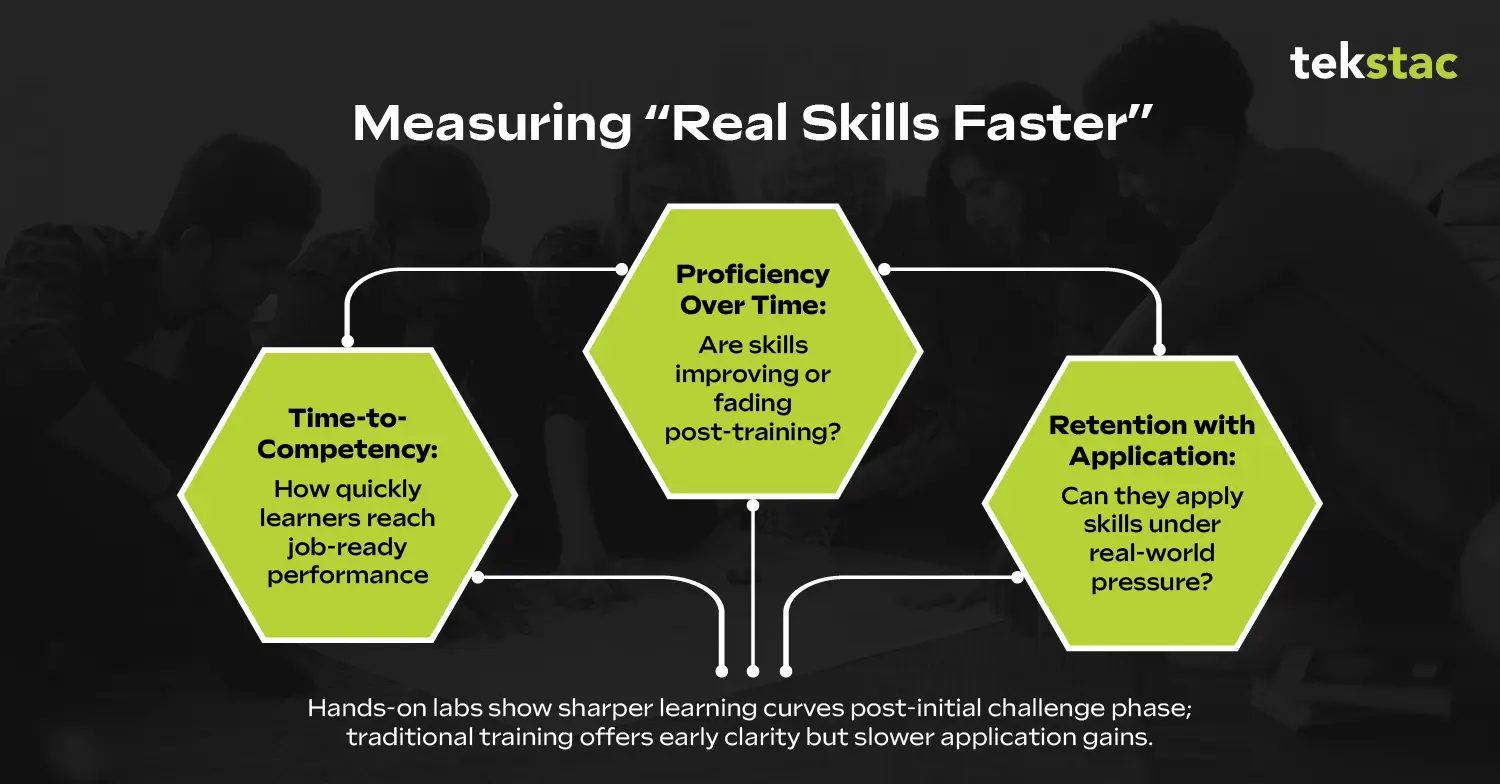
1. Time-to-competency: This tracks the period from initial exposure to independent performance. This metric matters especially in hands-on labs training method because it shows real business impact. Some learners might finish traditional courses quickly but can still struggle when faced with actual work situations.
2. Proficiency over time: This metric checks how skills evolve after initial training, whether learners are continuing to improve. More importantly, it helps understand if employees retained and built on what they learned, or if skills deteriorated without reinforcement.
3. Retention with application: This metric helps measure if skills are translating successfully into real-world scenarios. It assesses whether learners can successfully apply learned skills weeks or months later when the pressure is on. It’s one of the core metrics of training methods such as hands-on labs or immersive labs.
Studies show hands-on training and traditional learning don’t follow the same curve. People in labs might hit a rough patch early on. It feels harder at first. But once they get it, things move fast.
On the other hand, traditional training methods typically produce smoother, more predictable curves early on. Learners build knowledge, and assessment results look more consistent in the short term. However, the real test comes during transition to actual application, where learners face a secondary learning curve as they adapt to practical situations.
Evidence: Which One Builds Skills Faster?
Below, let’s examine in detail which training method helps build and apply skills faster, whether it’s hands-on labs, traditional training, or both.
1) Hands-On Labs: Strengths and Limitations
Hands-on labs can require higher investment amounts due to purchase of equipment, software, and specialized instruction. But they may reduce the time employees spend transitioning from training to productive work.
Hands-on training creates conditions that naturally accelerate skill development. When learners face challenges in simulated environments, they must solve them immediately. This can create a pressure-cooker effect where learning happens under conditions that mirror real business situations.
Hence, the feedback loop in hands-on environments operates at a higher speed. Quick feedback makes a big difference. People catch mistakes early and learn what works by actually doing it. In hands-on setups, they’re more likely to try stuff, mess up, and figure things out. That kind of trial-and-error helps build real problem-solving skills, not just for the task at hand, but for situations they haven’t even seen yet. More than anything, it gives them the confidence to handle the unknown.
2) Traditional Training: Strengths and Limitations
Traditional training is best at building systematic understanding efficiently. Difficult topics can be broken down logically, with each concept building on previous ones. This helps develop comprehensive mental models before employees start practicing application.
Traditional training usually moves slow and steady, unlike hands-on labs. The instructor can stop and explain things before jumping ahead. That helps people who might need more time. With hands-on stuff, it’s easy to feel lost early on, especially when things get too complex too fast.
However, in contrast to hands-on labs, traditional approaches struggle with the transfer problem. Knowledge gained does not always translate smoothly to real-world application. Learners may understand concepts but hesitate when faced with actual decisions or problem-solving situations.
This nature can create artificial delays, where learners might be ready to tackle practical applications before the curriculum allows them to, leading to frustration and missed opportunities for reinforcement through practice.
3) Hybrid or Blended Approaches
Smart organizations increasingly recognize that the hands-on labs versus traditional debate does not always create the right choice for every organization. For some companies, the most effective training approach can be a combination of both, using each method’s strengths to address the other’s limitations.
Sometimes training mixes both. First, you learn the basics in a class. Then you do hands-on work to practice. Or you try things out first, ask questions, and then get the lessons to make sense of it all.
Here, the key is in timing and integration. Rather than treating these as separate phases, effective blended approaches integrate theory and practice together, allowing learners to move fluidly between understanding concepts and applying them in realistic contexts.
With technology, organizations can perfectly balance theoretical resources while working through practical challenges, or where simulation environments include embedded coaching and explanatory content that appears when needed.
The best training blends both worlds.
Give your team the skills they need now—and the growth path for tomorrow.
See How Tekstac Helps.
Variables That Affect How Fast Employees Learn
Not everyone learns at the same speed. Some pick things up quickly, others take their time. That’s not a bad thing. It usually means the training style doesn’t fit their experience, situation, or sometimes the content itself.
1. Learner Experience Level (Novice vs Advanced)
Experience level dramatically influences which training approach will build skills faster. When you’re new, it helps to learn step by step. Jumping into hands-on work right away can be tough if you don’t know the basics.
That said, beginners can still learn well with hands-on tasks—as long as they’re not too hard. The goal is to build confidence, not show what you don’t know.
If you already have some experience, hands-on usually works best. You can connect new stuff to what you already know and learn faster. They can fill in knowledge gaps independently as they encounter them during practice.
Experienced professionals can find traditional training frustrating because it moves too slowly through concepts they already understand partially. They prefer to jump into application and learn through problem-solving, using theoretical resources as needed to support their practice.
2. Training Context: High-Risk vs Low-Risk Environment
The stakes involved in skill application influence training design. In high-risk places, where mistakes can cause big problems, it’s better to start with careful traditional training before trying hands-on work. In low-risk settings, people can experiment more and learn by making mistakes without causing trouble.
Hence, the risk level also affects the design of hands-on training itself. High-risk skills require carefully controlled simulation environments that can replicate realistic conditions without actual danger, while low-risk skills might be practiced in real situations with minimal modifications.
3. Context Difficulty (Simple Procedural vs Conceptual Strategy)
Simple tasks work well with hands-on learning. When learners can see the results right away—like using software, handling equipment, or following a set process—they pick it up faster.
Skills that need big-picture thinking, analysis, or creativity often do better with traditional training first. Things like understanding markets, reading organizational behavior, or planning strategy need solid mental models that hands-on labs work alone might not build.
After people learn the basics, doing hands-on work helps a lot. Case studies, simulations, or real projects let them try out what they know and get better in ways lectures don’t. Usually, it works best to break skills into steps—first teach the ideas, then practice in hands-on labs, and finally mix both with real experience.
The Path Forward
After understanding both approaches, the evidence points to a clear conclusion that the hands-on labs versus traditional training misses the real opportunity to integrate them intelligently through technology platforms that combine the systematic knowledge-building of traditional training with the immediate application benefits of hands-on labs.
The most effective approach integrates structured learning content with immersive practice environments. These are backed by real-time assessment and personalized guidance. When learners can access resources when they need them while working through realistic scenarios, they develop both understanding and performance.
Modern learning platforms like Tekstac exemplify this integrated approach. They combine extensive sandbox environments for real-world practice. Learners can move fluidly between both as their needs and progress dictate. Tekstac’s intelligent assessment and analytics track actual skill development patterns. Its AI-powered proctoring and plagiarism detection help ensure credibility, while predictive analytics identify skill gaps.
While speed matters, sustainable speed matters more. Hence, integrated learning platforms deliver both immediate impact and long-term capability, creating learning experiences that truly improve performance.
AI in Personalized Learning: Driving Workforce Growth at Scale
Generative AI is no longer a futuristic concept—it’s part of everyday life. A 2025 Deloitte survey revealed that 50% of professionals use generative AI for personal tasks, while 25% already apply it at work.
If employees are this quick to adopt AI in daily life, why should corporate learning lag behind?
AI-powered personalized training meets employees where they are, making learning more intuitive, engaging, and effective. In fact, EY projects AI could boost productivity in India’s IT sector by 45%, underscoring the scale of impact.
Traditional training models—static, one-size-fits-all, and disconnected from real-time skill needs—are no longer enough. Instead, AI in personalized learning enables adaptive pathways, role-specific upskilling, and continuous performance optimization. Organizations that embrace it can develop talent at scale, improve retention, and future-proof their workforce in an AI-driven era.
The Evolution of AI in Personalized Learning for Corporate Training
Historically, corporate learning programs have relied on standardized content delivery, which often fails to engage employees or address specific skill gaps. This generic approach can lead to disengagement and suboptimal performance.
In contrast, AI in personalized learning acknowledges that each employee has unique learning preferences, paces, and professional goals.
Key Benefits of AI in Personalized Learning for Businesses
- Contextualized Learning: AI tailors learning materials based on job role, past performance, and future career trajectory, ensuring that training directly impacts business outcomes.
- Proactive Knowledge Enhancement: Rather than waiting for performance reviews, AI identifies skill deficiencies early, providing targeted microlearning interventions that prevent knowledge gaps.
- Operational Efficiency: By automating administrative tasks such as tracking progress and generating reports, AI reduces the burden on HR and training departments. This efficiency allows for the reallocation of resources towards more strategic initiatives.
- Enhanced Engagement: AI-driven platforms assess individual learning needs through tools like surveys and quizzes, ensuring that content is relevant and engaging. This personalized approach fosters a deeper connection to the material, increasing motivation and participation.
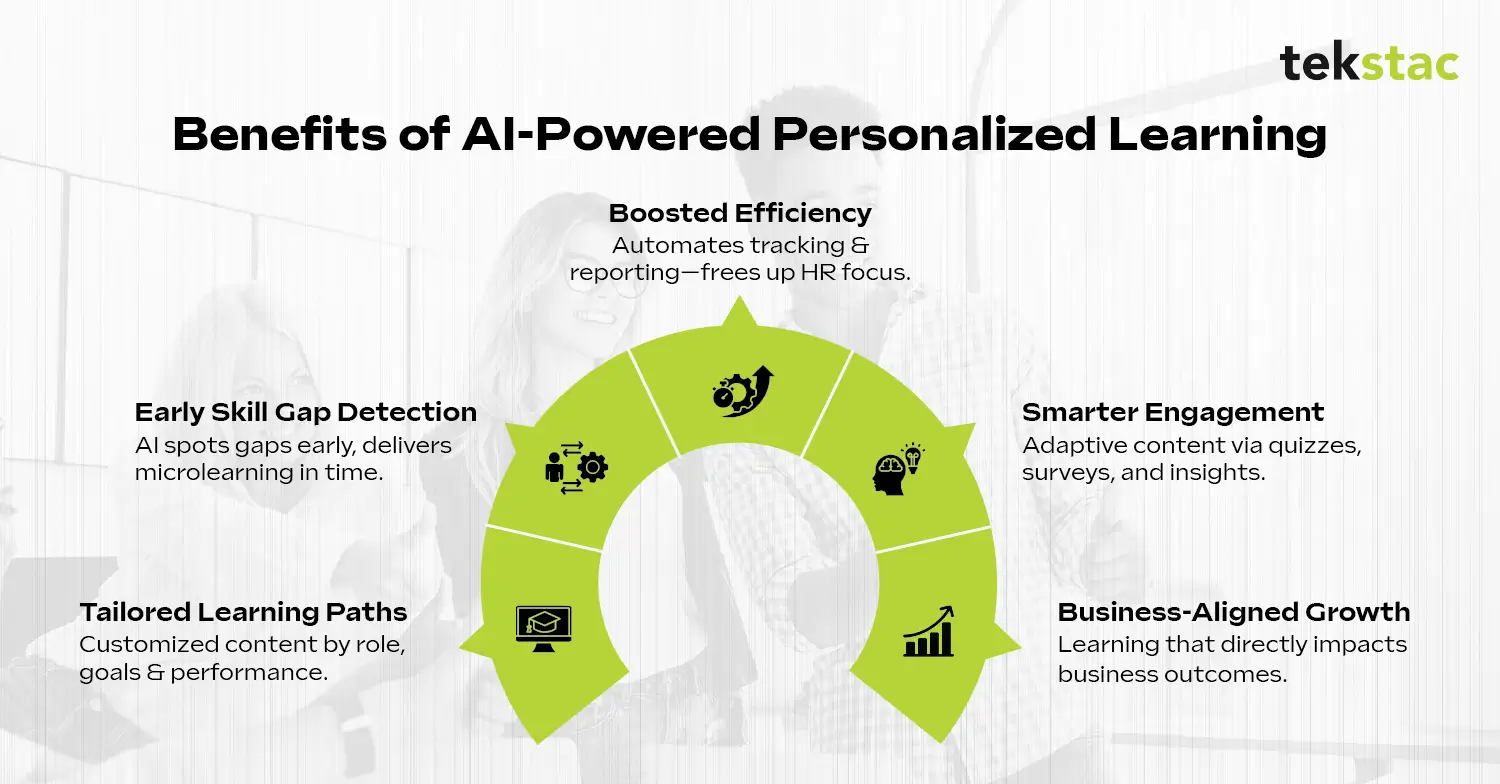
Traditional learning systems rely on fixed content modules, which often fail to resonate with individual learning preferences and skill gaps. However, AI-powered adaptive learning pathways transform training into a continuously evolving, employee-specific experience.
How to Implement AI in Personalized Learning Pathways
The successful integration of AI into corporate training involves several strategic steps:
- Data Collection and Analysis: Gather comprehensive data on employee performance, learning styles, and career goals. This data serves as the foundation for developing personalized learning paths.
- AI Model Development: Utilize advanced algorithms to analyze the collected data, identifying patterns and predicting future learning needs.
- Content Personalization: Develop adaptive learning modules that adjust in real-time to the learner’s progress, ensuring that content remains relevant and challenging.
- Continuous Feedback Mechanisms: Implement systems that provide immediate feedback to learners, allowing for timely adjustments to learning strategies and content.
Generative AI extends beyond just real-time conversations—it automates, personalizes, and refines corporate training programs at scale.
Multimodal Learning: AI-Generated Content Across Multiple Formats
AI-powered multimodal learning is changing the way training happens by making content more engaging and tailored to different learning styles. Instead of just reading a manual, learners can watch AI-generated explainer videos, interact with role-playing simulations, or even train in virtual reality (VR) environments.
This is especially useful in industries like manufacturing, where AI-driven simulations let technicians practice maintenance in a risk-free virtual space—improving retention and reducing real-world mistakes. It’s all about making learning smarter, more interactive, and personalized for each individual.
AI-Powered Workforce Upskilling & Retention Strategies
AI is making workforce upskilling easier by helping employees grow without interrupting their daily work. Instead of traditional training, AI personalizes career development by mapping learning paths to future job roles, so employees are always prepared for what’s next.
It also recommends microlearning modules, allowing employees to learn in small, manageable chunks during their workday.
AI helps HR teams predict internal talent mobility trends, ensuring high-potential employees stay engaged and move into roles that match their skills and career goals. It’s all about smarter upskilling that benefits both employees and businesses.
Real-Time AI Coaching for Soft Skills and Leadership Development
While technical skills are critical, AI in personalized learning is addressing the often-overlooked area of leadership and interpersonal skills in corporate training.
Generative AI is bridging this gap by enabling real-time AI coaching in areas like:
- Public speaking and communication: AI-driven voice analysis tools provide instant feedback on tone, clarity, and confidence.
- Negotiation and conflict resolution: AI-powered simulations present real-world business scenarios, allowing employees to practice decision-making.
- Executive leadership training: AI analyzes behavioral patterns and suggests personalized coaching strategies to develop leadership potential.
AI-Powered Translation for Global Workforce Training
AI is breaking language barriers in global workforce training by making learning accessible to everyone, no matter what language they speak. With AI-powered real-time translation, companies can deliver the same training across different regions without losing clarity or meaning.
AI converts live training sessions into multilingual transcripts, generates real-time subtitles for videos, and even localizes training materials by adapting them culturally and linguistically.
This ensures every employee gets the same high-quality learning experience, boosting inclusivity and knowledge retention across multinational teams.
AI in Crisis Management and Decision-Making Training
AI is transforming crisis training for corporate leaders by creating realistic, high-pressure simulations where they can practice decision-making without real-world risks. It doesn’t just test their responses—it also provides AI-driven feedback, analyzing both their emotional and logical approach to problem-solving.
AI can generate alternative scenarios, helping leaders stay prepared for unexpected challenges. For example, George Mason University uses AI-driven simulations like “Go-Rescue” to train professionals in crisis response, allowing them to practice decision-making in dynamic, real-world scenarios.
This kind of smart, adaptive training ensures that executives build confidence and resilience in handling crises before they happen in real life.
Case Studies in AI-Enhanced Training
Several organizations have successfully implemented AI-powered personalized learning:
- Johnson & Johnson: The company employs “skills inference” to evaluate workforce capabilities, allowing for targeted training interventions.
- DHL: By using AI to match staff skills with open positions, DHL promotes internal hiring and reduces recruitment costs.
- Bank of America: AI simulations are utilized to help employees practice challenging interactions, enhancing their preparedness and confidence.
The Future of AI in Personalized Learning and Workforce Development
As AI technology continues to evolve, its role in corporate training is expected to expand. Future developments may include more sophisticated predictive analytics, greater integration with other HR systems, and the use of virtual reality to create immersive learning experiences. Organizations that embrace these advancements will be better positioned to develop a skilled, adaptable, and engaged workforce.
While the benefits are substantial, organizations must navigate challenges such as data privacy concerns, the need for significant initial investment, and potential resistance to change among employees. Ensuring ethical use of AI and maintaining transparency in how data is utilized are paramount.
What if your team could learn smarter, faster, and in a way that truly fits their roles? Experience AI-driven personalized learning with a free demo today!
FAQs on AI in Personalized Learning
1. How does AI in personalized learning improve corporate training?
AI tailors training to each employee’s role, skills, and pace—making learning more engaging, relevant, and effective than one-size-fits-all methods.
2. What are examples of AI-powered personalized learning?
Examples include adaptive learning pathways, AI-driven coaching, microlearning modules, real-time feedback systems, and AI simulations for leadership, crisis, and technical training.
3. Why is AI in learning important for workforce development?
AI enables scalable, role-specific upskilling and continuous performance optimization—helping companies future-proof talent and retain employees in fast-changing industries.
4. Can AI replace traditional corporate training programs?
Not entirely. Instead, AI complements training by personalizing content, automating progress tracking, and enabling real-time coaching—making programs more effective and efficient.
5 Best Corporate Ethics Training Courses for Business Leaders
Your star employee just got caught taking bribes. Your company name is splashed across newspapers.
Investors are pulling out. Customers are boycotting.
Sound familiar?
This isn’t just a nightmare scenario. It’s happening to companies every single day around the world. The harsh truth?
Most of these disasters could have been prevented with proper ethics training.
What is Ethics Training?
Your company runs smoothly when everyone knows right from wrong. Ethics training makes this happen naturally. It’s not about boring rule books. It’s about transforming your team into individuals who consistently make the right call every time.
Different types available:
- Compliance training: Master company rules and policies
- Values training: Build character and integrity
- Scenario training: Practice with real workplace situations
- Leadership training: Special programs for managers and executives
- Industry training: Customized for your specific field
Top 5 Corporate Ethics Training Courses Every Business Leader Should Consider
- The Shield Against Corruption
- The Bribery Buster
- The Leadership Game-Changer
- The Gold Standard
- The Sector-Specific Solution
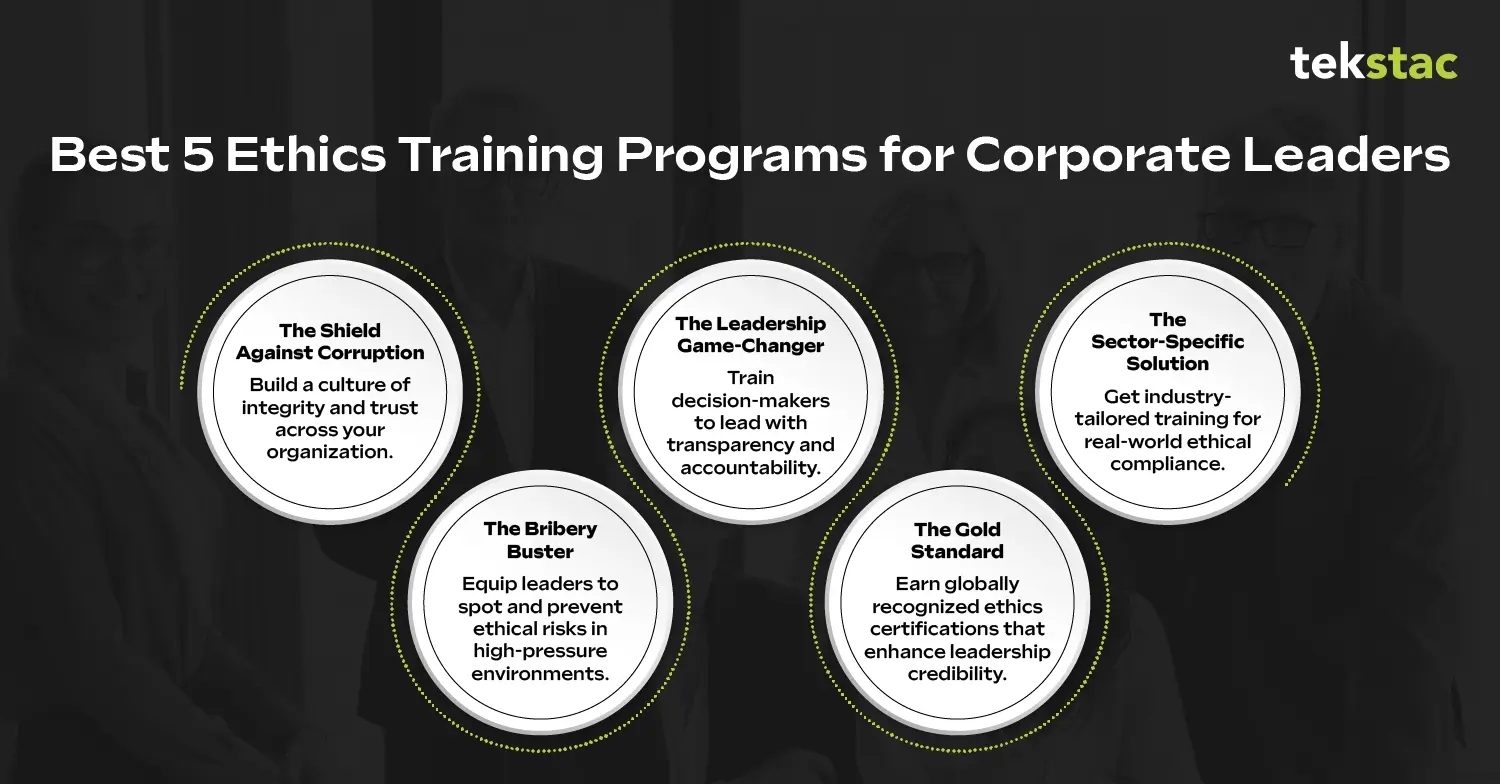
1. The Shield Against Corruption: Ethics Training That Works
Let’s be brutally honest here. When was the last time you saw an ethics training program that didn’t put people to sleep?
Most programs are boring, theoretical, and completely disconnected from real workplace challenges.
That’s where modern Ethics and Code of Conduct training breaks the mold.
What makes this different?
- Real-world scenarios that mirror actual workplace dilemmas
- Interactive modules that keep learners engaged (no more yawning!)
- Practical tools for handling ethical conflicts in the moment
- Scalable solutions that work for teams of any size
This isn’t your typical lecture-style training. It’s designed like a game where employees face real ethical dilemmas and learn to make the right choices.
Think of it as compliance and ethics courses that stick.
The course covers everything from protecting company assets to maintaining confidentiality—all the stuff that can make or break your business.
Innovative organizations are already using this approach to build unbreakable ethical cultures.
2. The Bribery Buster: Ethics Training for High-Stakes Decisions
Ready for a shocking fact?
According to Ernst & Young’s Global Integrity Report, 38% of businesses worldwide reported that bribery and corrupt practices are widespread in their country.
Even scarier?
Many employees don’t even recognize when they’re crossing ethical lines.
That’s where comprehensive Anti-Bribery and Anti-Corruption training is like having a personal ethics bodyguard for your team.
Why this program hits differently:
- Country-specific guidance that understands business culture
- Real case studies from actual corruption scandals
- Step-by-step decision-making frameworks for challenging situations
- Risk assessment tools that help identify danger zones before they become problems
This program doesn’t just tell people “don’t take bribes.” It explains why ethical behavior is good business.
It shows how companies that maintain high ethical standards consistently outperform their competitors. When your team understands that ethics equals profits, they’re more likely to stay on the right path.
3. The Leadership Game-Changer: Ethics Training for Decision Makers
Management isn’t just about hitting targets; it’s also about achieving overall success. It’s about setting the right example. Advanced Ethics Management training is specifically designed for managers and supervisors who need to lead by example while keeping their teams on the ethical path.
What makes leaders love this program:
- Practical tools for identifying unethical behavior before it escalates
- Scripts for difficult conversations about ethics
- Real examples of ethical and unethical actions with clear consequences
- Cost-effective solutions that deliver measurable results
This course addresses challenging topics, including time theft, abusive conduct, and conflicts of interest.
It doesn’t sugarcoat anything. Instead, it provides managers with the tools to address problems directly while maintaining team morale and productivity.
The Global Leadership Challenge: In hierarchical business cultures worldwide, managers often struggle with addressing ethical issues without seeming “preachy.” This program demonstrates how to make ethics feel natural and beneficial rather than like a punishment.
4. The Gold Standard: Business Ethics Certification That Opens Doors
Want to talk about serious credentials? The Leadership Professional in Ethics & Compliance (LPEC) certification is the MBA of ethics training. This isn’t just another certificate. It’s a career game-changer that the smartest professionals are pursuing through comprehensive training platforms.
Why professionals fight for this certification:
- Global recognition that opens doors internationally
- Comprehensive coverage of integrity in leadership principles
- Direct preparation for the prestigious LPEC examination
- Networking opportunities with ethics professionals worldwide
- Two-year certification that significantly boosts earning potential
This program is intense, thorough, and worth every penny. It covers everything from building ethical cultures to handling complex investigations. If you’re serious about making ethics your superpower, this is your ticket.
5. The Sector-Specific Solution: Ethics Training for Your Industry
Different industries face different ethical challenges. Banking has money laundering concerns. Healthcare has patient privacy issues. It has data security dilemmas. Generic ethics training misses these nuances entirely.
Industry-specific programs that deliver:
- Comprehensive Banking Ethics training for financial services
- Advanced sector-specific compliance programs
- Specialized workplace culture transformation modules
- Targeted diversity and inclusion development courses
Why specialization matters:
- Addresses real challenges your industry faces daily
- Use case studies that your team can relate to
- Provides specific tools for common industry dilemmas
- Builds confidence in handling sector-specific ethical issues
These programs recognize that a software engineer’s ethical challenges differ from those of a bank manager. They provide targeted solutions that work in the real world. Forward-thinking organizations are leveraging sophisticated training platforms that can deliver this level of customization efficiently and effectively.
The Million-Dollar Question: Why Should You Care?
Still thinking ethics training is just another corporate checkbox? Here are some wake-up calls:
The Cost of Getting It Wrong:
- Satyam Computer Services: ₹7,000 crore fraud that destroyed a company overnight
- Enron Corporation: $74 billion accounting fraud that collapsed a Fortune 500 giant
- Kingfisher Airlines: Ethical failures contributed to its collapse
- Wells Fargo: $3 billion penalty for creating millions of fake accounts
The Reward of Getting It Right:
- Tata Group: Ethical leadership built a century-old empire
- Patagonia: Strong values created lasting competitive advantage
- Johnson & Johnson: Ethical practices helped navigate multiple crises successfully
Implementation That Works
Here’s the truth nobody tells you: Most ethics training fails because it’s implemented poorly. Here’s how to make it stick:
The Smart Approach:
- Start with leadership. If bosses don’t care, nobody will
- Use real examples from your industry and region
- Make it interactive, not just informational
- Regular reinforcement through team discussions
- Precise reporting mechanisms for ethical concerns
The Global Context:
- Address cultural nuances around hierarchy and respect across different regions
- Discuss family business dynamics and potential conflicts in various cultures
- Cover gift-giving traditions and when they cross ethical lines globally
- Explain how ethical behavior enhances business relationships worldwide
Want to Future-Proof Your Entire Workforce Strategy?
Ethics is step one. Explore how leading organizations are reimagining training and development to build high-performing, ethical, and future-ready teams.
👉 Learn More: The Future of Employee Training & Development
The Technology Edge
Modern ethics training isn’t just about boring PowerPoint presentations. The most innovative companies are using:
- AI-powered personalized learning paths that adapt to individual needs
- Virtual reality scenarios for realistic practice without real-world consequences
- Mobile-first content designed for today’s busy professionals
- Gamification strategies that make learning genuinely engaging
- Advanced analytics to track real behavior change and measure ROI
The most successful organizations have discovered that the right technology platform can transform ethics training from a compliance burden into a competitive advantage.
Your Next Steps
The question isn’t whether you need ethics training—it’s which program will transform your organization. Here’s your action plan:
- Assess your current situation: Where are your ethical weak spots?
- Choose programs that fit your needs: Don’t try to do everything at once
- Start with leadership: Get buy-in from the top
- Implement systematically: Roll out in phases with proper support
- Measure and adjust: Track results and improve continuously
Remember, in the game of business, ethics isn’t just about playing fair—it’s about playing smart. Innovative companies know that integrity in leadership isn’t just a nice-to-have—it’s the foundation of sustainable success.
The choice is yours. Your company’s future depends on it.
Transform Your Organization’s Ethics Culture Today
The most successful companies don’t just hope their employees make ethical decisions; they invest in comprehensive training that transforms workplace culture from the ground up.
These industry leaders understand that proper ethics training isn’t just a compliance checkbox; it’s a competitive advantage that drives real business results.
Request Your Free Demo Now and discover how the right training platform can transform your organization’s ethical culture—before your competitors do.
Why Peer-to-Peer Recognition Outperforms Top-Down Praise in 2025
How many times have you gotten praise at work that didn’t quite hit right?
Like it was from someone who didn’t really see the effort you put in — or the struggles you faced. That’s the most common experience with traditional top-down recognition, which misses the mark because it’s distant, generic, or delayed.
In fact, as per Gallup, only 23% of employees strongly agree they feel recognized at work. That means nearly 8 out of 10 people feel overlooked, despite all the hard work they put in.
The traditional form of recognition is off and ineffective. Our way of recognizing employees is stuck in the past, being outdated and out of sync with how work actually gets done today. What we need is something real and immediate, coming from people who see the hard work and impact of work every single day. That something is peer-to-peer recognition.
What is Peer-to-Peer Recognition?
Peer-to-peer recognition is when employees recognize each other’s work, contributions, and skills. They recognize publicly and directly, without waiting for a manager or a leader to do it. It’s that shout-out from the teammate who saw you stay late just to get that project done. Or a quick thanks from a coworker who knows exactly how much time you saved them.
Unlike the usual top-down praise, peer recognition happens right then and there. It feels real because it’s coming from people who get the work you do. It’s less about formal awards and more about everyday moments that add up to a culture where everyone feels seen and appreciate among the people they work.
Top-Down Recognition: Why It’s Losing Its Edge
Top-down praise has been the traditional way workplaces recognize achievements for decades. It flows from management down through the organizational hierarchy, and this model is currently showing its age. What once seemed like the natural order of workplace acknowledgement now feels increasingly disconnected from the real work happening on the ground.
Picture this: a manager who’s not involved in the daily grind gives praise based on a quarterly review or what they heard from someone else. The timing’s off. They don’t really get the full picture. So when the praise finally comes, it feels more like formality than real thanks.
This model can also result in a system where employees look up for approval rather than around for collaboration. If we look around, the modern workplace doesn’t operate in typical hierarchical lines anymore. Projects across departments, teams form and dissolve based on need, and some of the most valuable contributions happen in the spaces between job descriptions. Yet our recognition systems remain stuck in an organizational chart that doesn’t reflect how work actually flows.
Furthermore, managers have limited bandwidth, making recognition another item on an already crowded to-do list. What should be immediate and genuine becomes scheduled, hence organizations are now shifting towards peer-to-peer recognition.
Peer Recognition: 7 Tangible Benefits Over Top-Down
The shift we’re seeing, from hierarchical praise to peer recognition, is not a trend; rather, it delivers measurable advantages that traditional top-down systems simply cannot match.
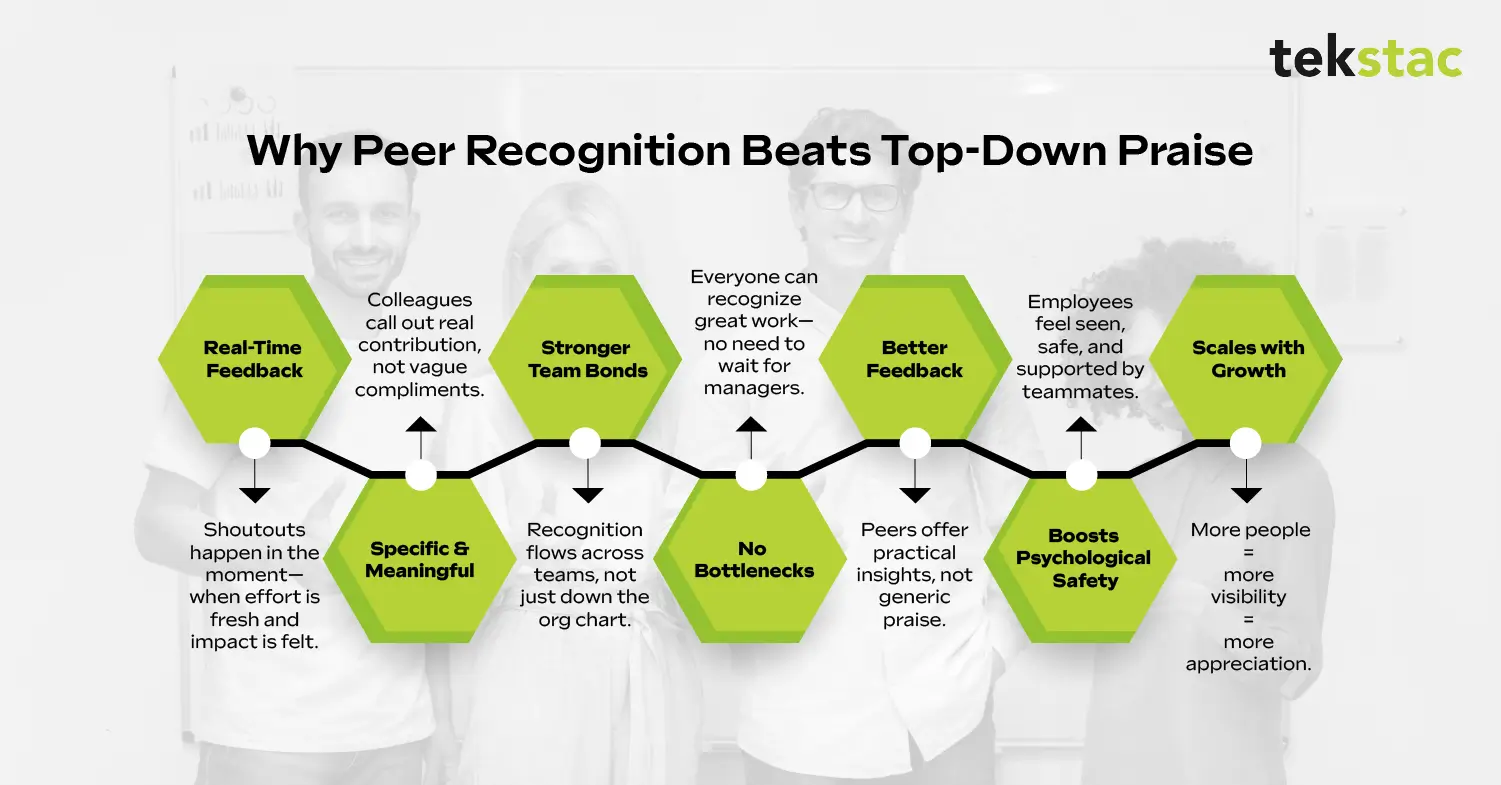
1. Immediate Context and Relevance
Peer recognition operates on the principle of proximity, as colleagues work alongside each other, see the real challenges, and witness the actual problem-solving process. Hence, peer to peer recognition naturally addresses specific contributions rather than broad performance categories. In contrast, traditional top-down recognition operates at a remove from the actual work. When received, it tends toward the general rather than the specific, simply because they lack the granular visibility that peers possess.
2. Authentic Timing
Recognition loses power when it’s delayed. Acknowledgement hits hardest when it comes right after the win, while the effort is still fresh. That’s why peer-to-peer shoutouts work so well. They happen naturally, in the moment, not because some formal process says they have to. This immediacy also means that recognition can influence ongoing work, encouraging continued collaboration and excellence within the same project cycle.
Hence, this trumps traditional recognition models as they operate on scheduled intervals or formal recognition ceremonies. By the time these moments arrive, the specific contributions have faded into broader performance assessments.
3. Builds Horizontal Relationships
Most companies focus on the relationships between managers and their teams. However, while this is important, it is only one way how people can connect at work. When colleagues recognize each other directly, it creates a different kind of connection, where recognition runs across teams, rather than just up and down the chain of command.
Top-down recognition is helpful, but it doesn’t do much to strengthen peer relationships. In fact, it can sometimes create competition for managerial attention rather than create connections between employees.
4. Reduces Recognition Bottlenecks
Managers, regardless of their good intentions, have limited scope and imperfect visibility into all the work happening within their teams. They become single points of failure in the recognition system. When they’re busy, distracted, or simply unaware of specific contributions, recognition doesn’t happen at all. This leaves team-wide recognition gaps, leaving some types of contributions undervalued.
Peer recognition distributes this responsibility across the entire team, where every team member becomes a potential source of recognition. This way, good work gets seen and appreciated more often. It also means that one person’s effort can get a shoutout from different people, each noticing something unique about what they did.
5. Encourages Specific, Actionable Feedback
The best recognition does more than acknowledge past performance and provides insight that can improve work. Peer recognition works best because coworkers really get the details. They understand the work and can give feedback that actually helps. They don’t just say what was good — they explain why it mattered and how it made a difference. This detailed feedback creates a continuous learning environment where recognition and employee development support each other.
Top-down praise leans toward broad categories, such as “great teamwork” or “excellent results,” without the details that make feedback useful for performance improvement. This fails to provide guidance that helps employees understand and replicate their successes.
6. Creates Psychological Safety
Psychological safety means feeling like you can speak up without fear of being judged. It’s what makes teams work well. When peers recognize each other, it helps build that safety. When your teammates notice and appreciate your work, it makes it easier to take risks, ideas, and admit when things go wrong. This support helps employees stop worrying about being judged, and instead helps focus on doing their best.
Also, recognition from managers is importance, but it doesn’t always build the same sense of psychological safety peer recognition does. While employees welcome praise from their supervisors, which still works within a hierarchy, they can feel anxiety about performance rather than gaining the confidence needed to improve at work.
7. Scales Naturally with Team Growth
As teams grow, traditional recognition systems become increasingly difficult to maintain effectively. Managers have more direct reports to track, more contributions to notice, and more relationships to manage. The quality and frequency of recognition often decline as team size increases as well.
Peer recognition actually works better as teams get bigger. More people mean more chances for good work to get noticed, more ways to appreciate different skills, and more chances to give shoutouts. The whole system gets stronger the more it grows. This really matters when teams often change, grow, shrink, or shift around for different projects. Old-school recognition systems don’t keep up well with these changes because they rely on fixed bosses and reporting lines.
Recognition Redesigned for Modern Teams
As discussed, traditional top-down recognition systems are failing modern teams, unlike the peer recognition model that delivers immediate, specific, and meaningful acknowledgement that drives performance. The main challenge is that peer-to-peer recognition requires the right conditions, visibility into each other’s work, shared experiences, and systems that naturally encourage feedback. Without these foundations, even the best intentions around recognition fall flat.
This is where strategic learning programs become essential. This is where you create conditions where people learn together, grow together, and develop skills as a team, so peer-to-peer recognition becomes a natural byproduct. First, let’s get the fundamentals right.
Ready to see this in action? Discover how Tekstac enabled a fortune 500+ tech company to transform its culture by onboarding and upskilling 40,000+ fresh graduates, creating the visibility, accountability, and cross-team connections that make peer-to-peer recognition thrive.
Talent Strategies for CHROs in 2025: Trends, Tactics, and Transformation
As we move through 2025, talent strategies have evolved from a nice-to-have to a business necessity for survival.
CHROs (Chief Human Resources Officers) aren’t just managing people anymore. They’re using data, much like architects, to reshape entire organizations from the inside out.
Here’s the reality: your competition already knows what you’re thinking. They can predict your next hire, spot your talent gaps, and attract your best performers before you even realize they’re unhappy.
Companies that master data-driven talent decisions are outperforming those still relying on gut feelings and annual reviews. Your people aren’t just employees. They’re your competitive edge. When human potential meets strategic precision, competitors can’t keep up.
The question isn’t whether you need to evolve your approach; it’s whether you can. It’s whether you dare to reimagine how you think about people completely.
Talent Trends Shaping the Future
1. AI-Powered Talent Strategies Transform the Leadership Landscape
Your most significant competitor just hired three of your key people. They knew those employees were unhappy six months before you did.
How?
AI told them.
AI tools are exposing everything. Statista reports that 72% of organizations worldwide have adopted AI in at least one business function. Skills inventories, performance patterns, flight risks – it’s all transparent now.
Modern approaches aren’t about posting jobs and hoping anymore. They’re about intelligence, and you’re fighting blind.
2. Workforce Planning for CHROs Demands Strategic Foresight
While you’re sitting in meetings talking about “hiring challenges,” your competitors are building talent machines that make your approach look amateur.
Modern workforce planning isn’t about spreadsheets anymore – it’s about survival. Here’s what’s happening while you sleep: McKinsey found that AI can automate up to 70% of what your people do every day. That accountant you just hired? Half of their job is already replaceable. That marketing coordinator? AI is writing better copy than they are.
Actionable Talent Strategies for CHROs
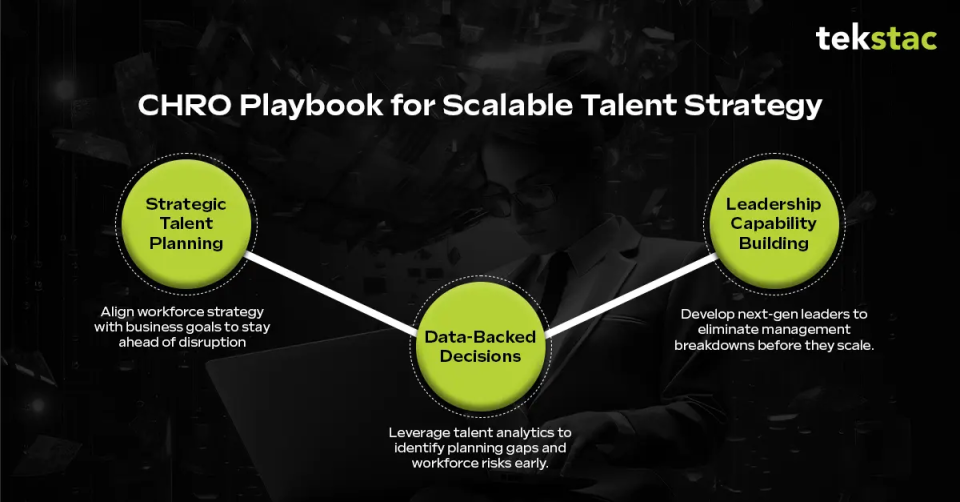
1. Strategic Talent Strategies Drive Competitive Advantage
Three moves that separate winners from losers:
- Future planning beats reactive hiring: Top companies plan their workforce like chess masters—three moves ahead, always. While you’re scrambling to replace those who quit yesterday, they’re building the skills they’ll need in 2027. They know which roles AI will eliminate and which new ones they’ll create. Strategic planning prevents crisis hiring that costs 40% more than proactive recruitment.
- Career clarity drives retention: IBM’s AI helps employees visualize their exact career path and the training needed to achieve it. People don’t leave when they see their future. Clear progression plans are more effective than any retention bonus you can offer. Internal mobility costs 50% less than external hiring and builds loyalty that competitors can’t break.
- Digital behavior reveals the truth: Forget annual surveys and exit interviews. AI analyzes the digital patterns of your workforce, including email tone, project participation, and collaboration frequency. It whispers who’s mentally checked out before they even think about updating their LinkedIn profile. This intelligence prevents departures rather than just tracking them.
2. Data-Driven Talent Strategies Expose Planning Weaknesses
Five brutal truths about workforce planning you need to face:
- Your scenarios are weak: You plan as if tomorrow will be exactly like today. Smart CHROs prepare for scenarios where AI eliminates entire job categories, where remote work erodes office culture, and where top employees are poached overnight.
- Skills matter more than degrees: You’re still hiring based on where someone went to school instead of what they can do. Skills-based companies are stealing your best candidates because they see potential you’re blind to. While you demand bachelor’s degrees, they’re hiring brilliant problem-solvers who learned through experience, boot camps, or self-teaching.
- Your gut is expensive: Every “feeling” you have about people costs money. Data reveals who is mentally checked out before they quit. It shows you what skills you’ll need next year. But you’d rather trust your instincts than numbers. Predictive analytics can forecast turnover with 85% accuracy, but most CHROs tend to overlook these warnings.
- Diversity isn’t charity: It’s a competitive advantage. Diverse teams spot market changes faster and make smarter decisions. You think you’re being socially responsible while your competitors are using diversity as business intelligence. Diverse companies are 35% more likely to outperform competitors financially.
- You’re bleeding talent internally: Your people leave because they can’t see their future at your company. Internal mobility isn’t just HR fluff – it’s a talent retention strategy that works. Every external hire costs more than developing someone internally. Companies with strong internal mobility have 41% lower turnover rates.
3. Modern Talent Strategies Eliminate Management Failures
How your current approach is failing:
- Your feedback is too slow: Annual reviews tell people how they did last year, not how to improve today. By the time you give feedback, problems have already hurt performance.
- Recognition misses the mark: Generic praise doesn’t motivate anyone. Some people want public recognition at team meetings, while others prefer private feedback from their manager. Some value career advancement, while others seek opportunities for skill development. Your one-size-fits-all recognition feels empty and meaningless. Personalized recognition increases engagement by 31%.
- Technology replaces thinking: You’ve invested in expensive HR platforms that generate visually appealing dashboards, showcasing engagement scores, performance metrics, and development gaps. But your managers stare at the data without knowing what actions to take. The software alerts you that someone is disengaged but doesn’t indicate whether they require more challenging work, better recognition, or career clarity.
- Everyone gets treated the same: You use identical development plans, identical recognition programs, and identical career conversations for different people. But Sarah thrives with autonomy, while Mike needs structure. David wants to advance quickly, while Lisa wants to master her current role.
4. Effective Talent Strategies Transform Leadership Development
Your leadership programs are failing – here’s why:
- You teach theory instead of reality: People sit in classrooms learning about emotional intelligence, but they never practice having difficult conversations, managing underperformers, or leading through crises that occur at work. Experiential learning delivers 90% better retention than classroom training.
- Digital learning lacks depth: You’ve moved everything online to save costs, but in doing so, you’ve lost the human connection that builds fundamental leadership skills. People click through modules about communication without ever actually practicing face-to-face difficult conversations or learning to read body language and understand team dynamics. Virtual training without human interaction fails 67% of the time.
- Succession planning picks favorites: You identify “high-potential” employees based on who speaks up in meetings and fits the traditional leadership mold. You miss quiet leaders, diverse perspectives, and people who lead differently. Your succession pipeline resembles your current leadership – the same backgrounds, the same thinking, and the same limitations. Inclusive succession planning identifies 40% more future leaders.
- Development happens in isolation: You send individuals to programs but don’t change the systems they return to. They learn new approaches but work in environments that reward old behaviors. Without organizational support, new skills often disappear within weeks of completing training. Sustainable change requires system-wide transformation, not individual training.
Organizational Transformation at Scale
1. Dynamic Talent Management Revolutionizes Employee Experience
Your current approach is stuck in the past, and your top talent is aware of it. While you’re conducting annual reviews and basic recognition programs, innovative companies are engaging in real-time coaching conversations and creating personalized growth experiences for each employee.
Research shows employees with positive experiences are 16 times more engaged. That’s the difference between people who stay and grow versus people who quietly quit and leave.
2. Leadership Development Programs Drive Organizational Resilience
Your current programs are expensive team-building retreats disguised as strategy. While you send people to weekend workshops about “authentic leadership,” your competitors are building leaders who know how to navigate chaos, inspire teams, and drive results when everything falls apart.
You think leadership development means soft skills training and motivational speakers. Real development creates people who can make tough decisions under pressure and turn uncertainty into opportunity.
Ready to transform your talent strategy for 2025?
Discover how cutting-edge platforms can accelerate your workforce development initiatives and drive measurable business impact.
Explore innovative solutions that align with your strategic objectives at Tekstac.
CXO Insights: How GCCs Are Becoming Global Innovation Hubs
The Evolution of GCCs
Global Capability Centers (GCCs) were once primarily cost-saving arms for multinational corporations, handling back-office operations like IT support, finance, and HR. But the landscape has shifted dramatically. Today, these centers are transforming into dynamic innovation hubs, driving digital transformation, customer experience strategies, and AI-led growth initiatives.
This evolution is backed by hard data: according to a 2024 McKinsey survey, 63% of global CXOs say their GCCs are now central to innovation and not just execution. Moreover, Bain & Company’s 2024 GCC Outlook reveals that over 60% of GCCs are expected to manage end-to-end digital product portfolios by 2027.
These are no longer back-end functions- they’re strategic frontlines. For CXOs, the message is clear: the next wave of innovation will be orchestrated from these hubs, not just headquarters.
Why the Shift from Cost to Innovation?
1. The Talent Advantage
One of the foremost drivers of this shift is the availability of high-quality, innovation-ready talent in GCC locations. Countries like India, Poland, the Philippines, and Mexico boast a rich pool of engineers, data scientists, UX designers, and domain experts. These professionals are not just executioners; they are creators. GCCs have evolved into hubs where design thinking, AI/ML experimentation, and digital product development thrive.
“Our India GCC is no longer just a delivery arm. It’s where some of our most groundbreaking AI models are being built and tested.” – CTO, Global Retail Conglomerate
2. Technology Democratization
Advancements in cloud computing, AI, low-code platforms, and collaborative tools have made it easier for distributed teams to co-create and deploy solutions globally. GCCs, empowered with access to the same tools and platforms as headquarters, now participate in high-impact innovation projects from day one.
3. Strategic Mandates from CXOs
Forward-thinking CXOs are increasingly issuing mandates for GCCs to lead in specific innovation areas. Whether it’s building AI capabilities, launching new digital products, or experimenting with new business models, GCCs are being positioned as co-owners rather than implementers.
4. The Pandemic Push
COVID-19 forced rapid digital transformation. Enterprises had to pivot overnight, and GCCs became crucial in ensuring business continuity and innovation agility. Many organizations realized that these centers could deliver more than support- they could lead transformation.
What Defines an Innovation Hub?
Innovation Hubs are not just about ideas; they are about execution at scale. GCCs that operate as innovation hubs share the following characteristics:
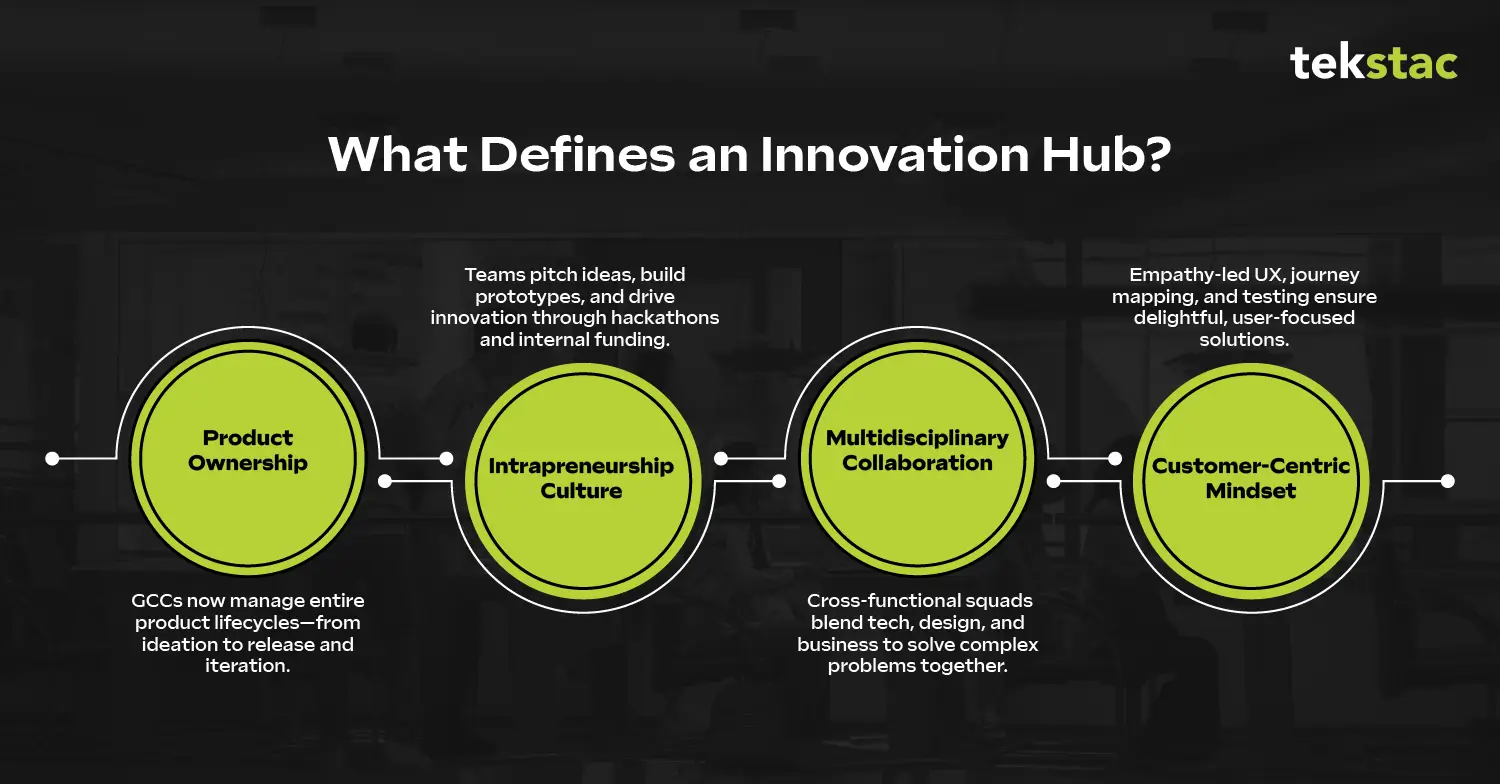
1. Product Ownership
GCCs are no longer just contributors to product development- they own product lifecycles. From ideation to release and iteration, they manage global digital platforms and services.
2. Intrapreneurship Culture
Innovation hubs promote a culture of intrapreneurship. Teams within GCCs are encouraged to identify problems, pitch solutions, and prototype products. Internal hackathons, innovation funds, and sandbox environments fuel this ecosystem.
3. Multidisciplinary Collaboration
Successful innovation hubs bring together diverse talent- engineers, designers, marketers, and business analysts, to collaborate on solving complex problems. GCCs are building integrated squads that mimic startup-like environments.
4. Customer-Centric Mindset
GCCs are investing in ethnographic research, journey mapping, and UX testing to ensure solutions are not just functional but delightful. Empathy-led design is now a core philosophy.
Industry Examples
Retail
Target’s GCC in Bangalore is a prime example of a successful innovation hub. The center has developed supply chain optimization algorithms, AI-driven product recommendations, and mobile app enhancements that have directly impacted customer experience and revenue.
Banking
JPMorgan Chase’s global centers are leading the charge in blockchain experimentation, fraud detection algorithms, and personalized financial advisory bots- much of this driven by their offshore teams.
Healthcare
Philips and GE Healthcare have expanded their GCCs in India to include R&D labs. These centers are now responsible for building diagnostic imaging algorithms and digital health solutions that are deployed globally.
The Role of CXOs in Driving This Shift
1. Vision and Intent
The transformation of GCCs into innovation hubs begins with leadership intent. CXOs must communicate a bold vision and empower their GCCs with the autonomy and budget to pursue it.
2. Flattened Structures
Hierarchical bottlenecks kill innovation. Successful CXOs are redesigning governance models to reduce dependencies and allow faster decision-making within GCCs.
3. Integrated KPIs
Rather than evaluating GCCs on cost savings or SLA adherence, CXOs are introducing innovation KPIs like patents filed, products launched, adoption metrics, and user satisfaction scores.
4. Global-Local Synergy
Innovative GCCs have direct access to business stakeholders and markets. CXOs are facilitating this by embedding GCC leads into global leadership forums and ensuring seamless collaboration across regions.
What Holds Innovation Hubs Back—and How to Fix It
Despite the momentum, certain challenges persist:
1. Legacy Perceptions
Many stakeholders still view GCCs as cost-saving mechanisms. Changing this narrative requires constant internal communication, success stories, and leadership advocacy.
2. Talent Drain
As the demand for digital skills rises, so does attrition. Innovation hubs need to create compelling employee value propositions, offering growth, global exposure, and impact.
3. Lack of Customer Proximity
Some GCCs struggle with understanding customer needs due to geographical distance. Investing in market immersion programs, customer interviews, and real-time feedback loops is essential.
The Future of GCCs as Innovation Hubs
1. AI and Automation Leadership
GCCs are poised to lead AI experimentation and automation at scale. From generative AI applications to process re-engineering bots, these hubs will be central to intelligent enterprise evolution.
2. Sustainability Innovation
Many GCCs are now tasked with designing ESG dashboards, carbon accounting systems, and green supply chain solutions. Innovation is no longer just about tech, it’s about purpose.
3. From Hubs to Orchestrators
The next frontier is not just about innovation within GCCs but orchestrating innovation across ecosystems– startups, academia, government, and other corporate partners.
The Strategic Imperative
The shift from cost center to innovation hub is not a trend, it’s a strategic imperative. For CXOs, the question is no longer whether GCCs can drive innovation, but how to scale and sustain this transformation.
Enterprises that embrace this shift will enjoy faster time-to-market, deeper customer insights, and resilient digital platforms. More importantly, they will tap into the collective brilliance of global talent to solve problems that matter.
GCCs are no longer the back office. They are the brain trust.
Business Scaling: 5 Strategic Ways Employee Upskilling Fuels Growth in 2026
Scaling a business in 2026 demands more than aggressive hiring or market expansion. Business scaling today depends on how effectively organizations develop internal capabilities, close skill gaps, and prepare teams for future growth.
According to a 2023 report by IBM, organizations that prioritize employee upskilling experience a 22% increase in revenue growth compared to those that don’t. This shows that investing in employee skills is one of the core engines beyond sustainable business scaling. In this blog, we’ll break down why workforce development is important for business scaling, and how they’re connected.
Why Employee Upskilling Is Central to Successful Business Scaling
Generally, business scaling is often associated with expanding business operations, entering new markets, or increasing production. However, what we miss is that behind every successful scale-up lies a workforce capable of handling that growth. This is exactly where employee upskilling becomes indispensable.
Employee upskilling refers to the process of equipping employees with additional skills to help them perform better in their current roles, while preparing for future responsibilities. Unlike reskilling, which is about training people for entirely new roles, upskilling focuses on depth over direction. It increases internal capability rather than replacing it.
How Employee Upskilling Directly Enables Successful Business Scaling
So, how does this matter for business scaling? Business scaling is something that requires faster decision-making, stronger collaboration, and adaptive leadership. Without investing in your people’s ability to meet those demands, it can become difficult to scale your business effectively.
Let’s take a simple example. If we say a mid-sized SaaS company is looking to serve enterprise clients. Their product roadmap would scale, and so do their expectations around security, analytics, and implementation timelines. If the customer success team hasn’t been upskilled on enterprise onboarding protocols or strategic account management, the scale breaks with roadblocks, ultimately leading to churn and declined revenue. Now, if we multiply that across departments, like sales, marketing, tech, or support, it becomes clear that scaling a business requires scaling your people.
This isn’t a theoretical idea. According to LinkedIn’s 2024 Workplace Learning Report, companies that embed upskilling into their core business strategy are 57% more likely to see higher employee retention, 23% more internal mobility, and 7% stronger management pipelines.
5 Employee Upskilling Strategies That Drive Business Scaling
For decades, we’ve seen business scaling be a numbers game, including customers, bigger budgets, and expanded product lines. This traditional mindset focuses on external growth factors and ignores internal driver, which is the capabilities of the workforce itself.
Below are five key reasons employee upskilling is essential for successful business scaling in 2026.
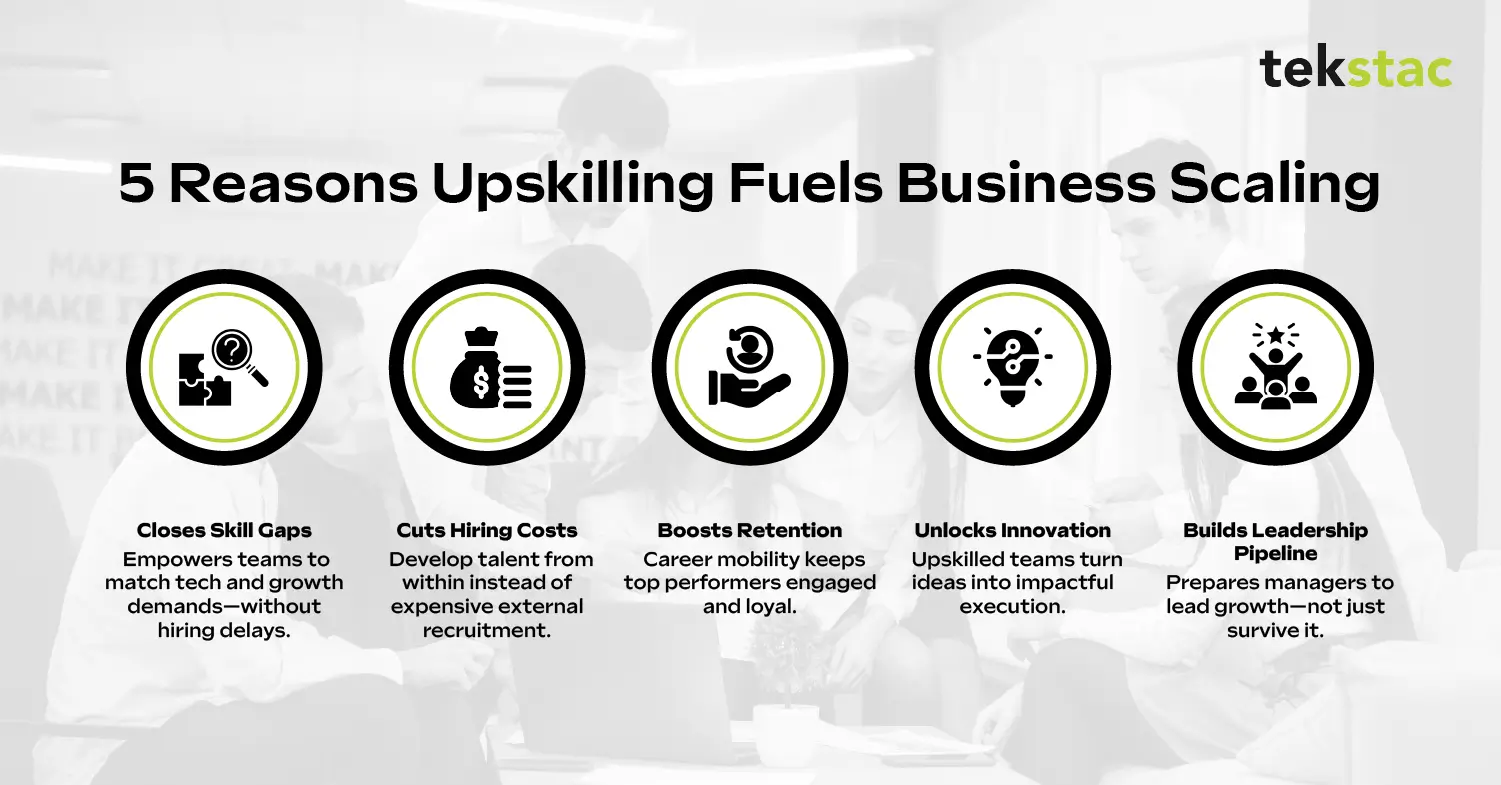
1. Closes Critical Skill Gaps That Stall Growth
Sometimes, companies may fail to scale as desired because their teams can’t keep pace with the scale they’re chasing. Quick digital transformations, new tools, and changing customer expectations demand new skill sets that the current workforce may not have. Workforce development closes this gap from the inside out. Instead of pausing to hire new talent for every emerging need, which is slower and costlier, companies can level up their existing teams to meet any new challenges.
2. Reduces Dependence on Costly External Hiring
Business scaling often tempts leaders to throw headcount at a problem. However, aggressive hiring during growth stages can lead to bloated teams, rising overheads, and misaligned talent. Hence, employee upskilling offers a more sustainable path.
When you develop existing employees into higher-impact roles, you retain organizational knowledge and culture, which are two assets that cannot be replaced with new hires. More importantly, it’s cheaper. Recruiting, onboarding, and ramping a new employee to productivity can cost 3 to 4x more than developing one internally.
LinkedIn’s Workplace Learning report found that organizations with solid internal mobility programs see twice as long employee retention than those with low mobility. Hence, upskilling builds from within, so you don’t constantly build from scratch.
3. Strengthens Retention by Creating Career Mobility
Most times, top talent quits because they feel stuck in their roles. LinkedIn reports that 94% of employees would stay longer at a company that invests in employee learning and development. A lack of employee development opportunities is one of the top reasons high performers walk away, especially in growing companies where roles change quickly but careers don’t.
Intentional workforce development provides employees a clear career path forward, showing them that there’s a future in the company beyond their current title. This directly improves retention, stability, and morale, all of which are extremely essential when your business is scaling and cannot afford churn.
4. Unlocks Innovation from Within
The teams closest to your customers, products, and systems often hold the most valuable insights. If they lack the skills to execute new ideas, those insights stay untapped. With proper upskilling, they can turn their knowledge into innovation.
Be it via training a support team in data analytics to find product bugs or coaching marketers on new AI tools to scale campaign testing, such small skill upgrades lead to big business advantages. Hence, it’s important to remember that you don’t always need to hire innovation, most times you just need to unlock it.
5. Builds the Leadership Pipeline Required for Long-Term Scaling
Companies can scale faster than their leadership capacity. This means they hire faster than they promote, and grow functions but not managers. And eventually, they hit a wall—not because of market failure—because of management failure. Thorough upskilling prepares mid-level managers to lead at scale.
It provides new leaders with the decision-making, communication, and strategic thinking skills to handle challenges. Without this, business scaling may crumble under pressure. They say they face leadership gaps that directly impact business growth. Scaling may add people, but it must multiply leaders as well.
Scaling a Business Through Employee Upskilling: A Practical Framework
Scaling a business without a structured employee upskilling strategy can prove to be ineffective. To create a workforce that also grows with your business goals, upskilling must be intentional, tied to business goals, and deeply rooted in the company’s culture.
Let’s see below how you can do it right:
1. Start with a Strategic Skills Audit
Before rolling out any programs, map your current capabilities against the future needs of the business. Look at two important things:
- What skills are missing in your teams today?
- What skills are important for tomorrow’s goals?
You can use internal performance data, manager feedback, and tools like skill assessments or 360-degree reviews to find skill gaps in both hard and soft skills. For instance, if your product roadmap is expanding into AI-based features, your customer support and marketing teams may need technical understanding in machine learning concepts, even if they’re not coding themselves.
2. Tie Upskilling Directly to Business Objectives
Upskilling must always directly support business revenue, product, or scaling goals. For example,
- If you’re scaling into new markets, train sales teams on cross-cultural negotiation
- If you’re launching a new product line, upskill managers on agile delivery or cross-functional collaboration
When learning programs are clearly tied to business outcomes, leaders buy in faster and employee see the value of upskilling programs.
3. Use Blended Learning Methods That Fit Your Team
Everyone learns differently, hence the most effective upskilling programs combine formal and informal methods, such as:
- Microlearning for quick, focused lessons
- Peer coaching or internal mentorship
- Workshops or real-time simulations for hands-on practice
- Online academies, like LMS platforms or certifications, for depth
4. Embed Upskilling into Daily Culture
Make development a shared responsibility between the company, manager, and the employee. This means ensuring regular development check-ins, celebrating learning wins, and so on. This transformation starts by changing development from being the sole responsibility of a single department:
- Organizations must create an environment that prioritizes learning as a strategic requirement
- Managers must bridge the role between strategy and execution
- Employees must take ownership of their own development
5. Measure the Business Impact
To scale sustainability of the learning program, you need to connect learning outcomes. Ask:
- Did productivity improve?
- Did project delivery speed up?
- Did collaboration or customer satisfaction improve?
These are the signals that tell you whether your employee upskilling strategy is enabling business scale.
Why Business Scaling Requires the Right Upskilling Infrastructure
Delivering an upskilling strategy at scale across departments, roles, and learning needs is a huge challenge. Organizations may struggle with execution at the time of business scaling because they lack the infrastructure to support personalized learning at speed.
Managing multiple learning paths, tracking progress across teams, ensuring assessment integrity, and keeping programs aligned with business goals require an end-to-end platform, such as Tekstac.
How Tekstac Powers Scalable Upskilling for Business Growth
A solution like Tekstac is built specifically for scaling upskilling efforts. It enables you to:
- Access 500+ curated learning paths across high demand domains like data analytics, cloud, cybersecurity, and more
- Deliver hands-on practice through sandbox lab environments, helping employees apply concepts in their work
- Make use of fine-grained assessments, AI-proctored tests, and video-based evaluations to ensure knowledge retention
- Gain real-time visibility into learning progress and capabilities through interactive dashboards and predictive analytics
- Customize programs with virtual sessions, mentor support, and business-aligned interventions, be it for new joiners or experienced teams
Ready to drive business scaling through employee upskilling? Explore how Tekstac helps global teams grow faster, smarter, and at scale.
FAQs on Scaling a Business
1. What does it mean to scale a business?
Scaling a business means growing revenue, customers, or operations without increasing costs at the same rate. Successful business scaling depends on efficient processes, skilled teams, and leadership readiness rather than adding headcount, ensuring growth remains sustainable and controllable over time.
2. How do you plan to scale your business in the next 1-3 years?
Businesses should plan to scale by aligning workforce skills with future growth goals, investing in continuous employee upskilling, and strengthening leadership pipelines. This approach helps teams execute faster, adapt to change, and support expansion without operational strain.
3. What is the biggest challenge in business scaling?
The biggest challenge in business scaling is the skills gap. When employee capabilities and leadership readiness fail to grow alongside business expansion, organizations face slower execution, inefficiencies, and higher attrition that directly limit growth.
4. What skills should L&D prioritize for scaling organizations?
L&D should prioritize skills that directly support business scaling, including digital and data literacy, cross-functional collaboration, agile project management, and leadership readiness. As organizations grow, skills in decision-making, change management, and customer-centric execution become critical to ensure teams can scale efficiently without slowing down operations.
How Tekstac’s AI-Powered Proctoring Builds Trust in Employee Training
If no one’s watching, did the learning even happen?
It may sound quirky, but in the age of digital-first learning, it’s a serious concern. As organizations scale training across geographies, devices, and job roles, there’s one question that continues to challenge L&D leaders.
What Is AI-Powered Proctoring and How It Works
AI-powered proctoring leverages artificial intelligence to monitor video and web activities of learner behavior during assessments and flag suspicious activities in real time.
Tekstac’s proctoring suite includes:
- Webcam monitoring (face detection, identity mismatch, multiple faces)
- Screen activity tracking (tab switching, unauthorized app usage)
- Audio monitoring (detecting other voices or external prompts)
- Copy-paste detection (matching against known web content or tools)
- Violation logs with timestamps, severity levels, and source links
But Tekstac’s solution goes beyond surveillance- it delivers data-backed trust by giving L&D teams evidence they can act on.
How AI-Powered Proctoring Bridges the Trust Gap in Virtual Assessments
Digital learning opens many doors- self-paced modules, remote access, cost-effective scalability. But it also creates loopholes:
- Learners can switch tabs or use external devices.
- AI writing tools like ChatGPT can generate responses.
- Assignments can be completed by someone else.
- Online videos and content can be copied and pasted with ease.
All of this raises a key concern: How do you ensure the person behind the screen is truly learning, not just performing?
Tekstac’s AI Proctoring technology is purpose-built to answer that.
AI-Powered Proctoring for Secure and Trustworthy Online Assessments
According to the 2024 LinkedIn Workplace Learning Report, 94% of companies say upskilling and reskilling are vital for business success, yet 62% of L&D leaders cite “assessment credibility” as a top challenge in virtual learning environments.
In a world where training data influences promotions, hiring, role-fitment, and project allocation, unreliable assessment results can undermine the entire learning initiative.
This is exactly why Tekstac’s AI-Powered Proctoring exists, to bridge the trust gap between learning and performance by making assessments smart, secure, and credible.
Upgrade your employee training and development strategy with AI-powered insights — book a quick demo.
Key Benefits of Integrated AI-Powered Proctoring
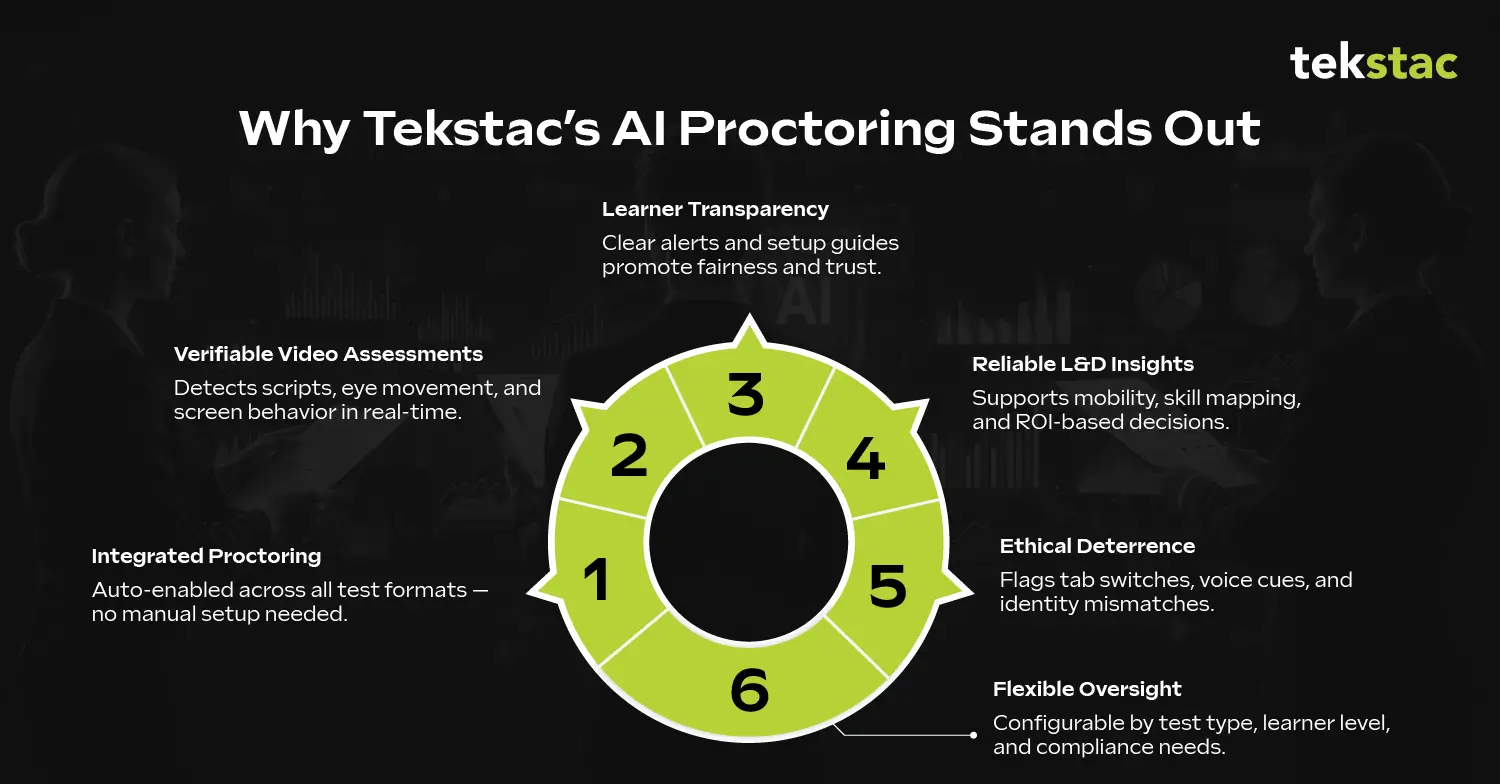
1. Proctoring That’s Built In, Not Bolted On
Many platforms add third-party proctoring as a post-process. Not Tekstac. Proctoring is deeply integrated within the assessment engine.
Every time a learner attempts a test, whether it’s MCQs, assignments, coding tasks, or video submissions- Tekstac automatically activates AI-based monitoring. There’s no manual step required.
What organizations get:
- A central proctoring dashboard
- Video and screen feed playback
- Severity-based violation categorization
- Copy-paste source traceability
- A consolidated Trust Score per learner
This allows managers to review learner behavior in context and take fair, confident decisions based on facts, not assumptions.
2. Video Assessments that Are Actually Verifiable
Video-based assessments are increasingly popular for evaluating real-world capabilities like communication, problem-solving, and tech fluency.
But are they truly reliable when done remotely?
Tekstac enhances video assessments by:
- Recording webcam + screen activity in parallel
- Detecting if learners read from scripts or seek external help
- Evaluating eye contact, voice clarity, and screen behavior using AI
- Giving evaluators rubric-based review panels with timestamps
This ensures that what appears as a confident video submission is genuinely the learner’s work, not a scripted or assisted performance.
3. Learner Confidence Through Transparent Proctoring
Trust doesn’t only go one way; learners need to feel the system is fair too.
Tekstac empowers learners by:
- Clearly notifying when proctoring is active
- Providing setup guides for screen and webcam sharing
- Allowing visibility into recorded behavior (in select cases)
- Framing proctoring as a support for authenticity, not surveillance
This approach builds a culture of accountability, where learners are motivated to perform well because their honest effort will be recognized and rewarded.
4. L&D Data That Leaders Can Actually Trust
A certificate means nothing without credibility. But when proctoring data is reliable, it becomes a decision-making tool.
Here’s how:
- HR teams use it to validate internal mobility
- Managers rely on it for project-based capability mapping
- L&D leaders measure skill effectiveness vs. investment
- CXOs see it as part of the overall training ROI dashboard
With Tekstac’s AI-Powered Proctoring, assessment scores carry real weight — not just as symbols of completion, but as proof of competence.
5. An Ethical Deterrent Against Dishonesty
Let’s be honest: if learners think no one’s watching, temptation increases.
Tekstac doesn’t punish, it prevents. The platform discourages malpractice through:
- Instant tab-switch alerts
- Background voice detection
- Identity mismatches via face tracking
- AI-generated content pattern flags
These features act as non-intrusive deterrents, encouraging learners to give their best effort, knowing there’s intelligent oversight in place.
6. Flexible Proctoring That Adapts to Your Needs
One assessment doesn’t fit all. A coding challenge for entry-level engineers requires different oversight compared to a leadership evaluation.
Tekstac offers configurable proctoring based on:
- Assessment type (coding, MCQs, essays, video)
- Seniority level of the learner
- Business criticality
- Compliance and privacy regulations
This ensures that proctoring isn’t rigid, it’s custom-fit for your organization’s structure and values.
Why AI-Powered Proctoring Builds Trust as the New Competitive Advantage
In the digital age, skill development is not a one-time event, it’s a continuous journey. But for that journey to mean something, there needs to be trust- trust in data, trust in results, and trust in the learner.
Tekstac’s AI Proctoring makes that trust possible.
By offering built-in proctoring, intelligent violation tracking, reliable video evaluation, and transparent learner engagement- Tekstac ensures that every assessment is fair, evidence-based, and business-aligned.
So, the next time you evaluate someone’s readiness for a role, a promotion, or a new project, you won’t just see scores, you’ll see truth.
And that changes everything.
Don’t let questionable results shape your business decisions.
See Tekstac’s AI-Powered Proctoring in Action – Book a Free Demo to Experience Trusted, Secure, and Fair Assessments.
FAQs on AI-Powered Proctoring
1. What is AI-powered proctoring in employee training?
AI-powered proctoring uses artificial intelligence to monitor and analyze learner behavior during online assessments to ensure fairness and prevent cheating.
2. How does Tekstac’s AI proctoring system work?
Tekstac integrates webcam, screen, and audio monitoring directly within its LMS to detect suspicious activity and generate a trust score for every learner.
3. Why is AI proctoring important for enterprise training?
It guarantees the credibility of online assessments, helping organizations make confident decisions about promotions, certifications, and project readiness.
4. Can Tekstac’s AI proctoring adapt to different assessment types?
Yes. Tekstac offers flexible proctoring modes for coding, video, essay, and MCQ assessments, configurable based on role, compliance, or test criticality.



